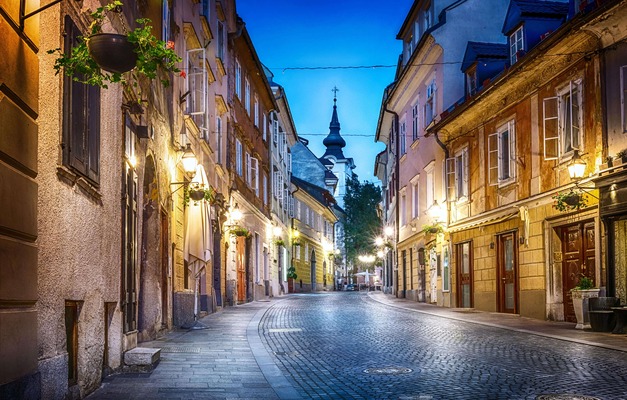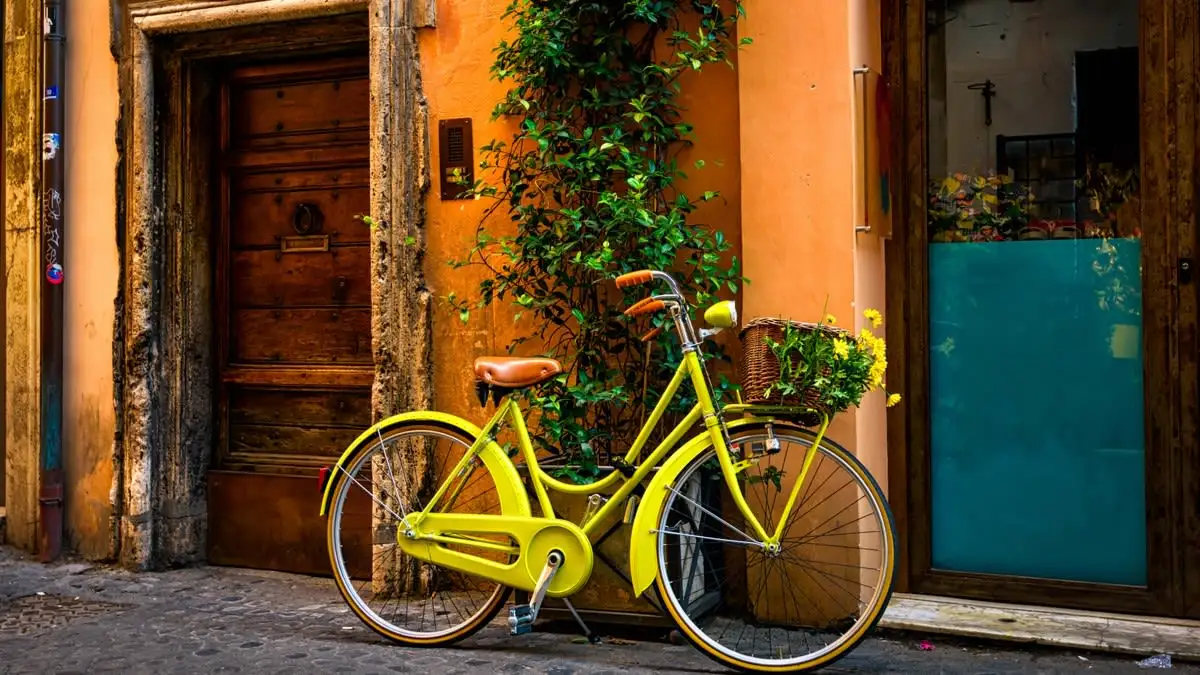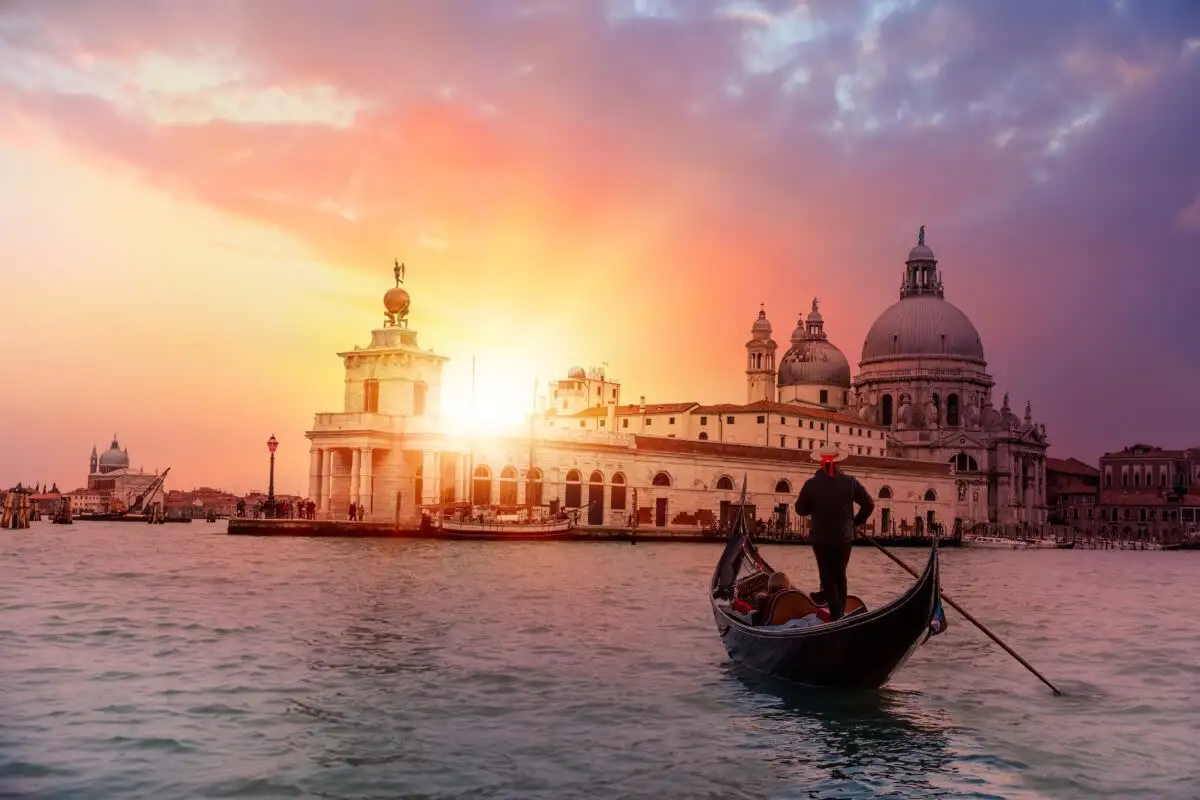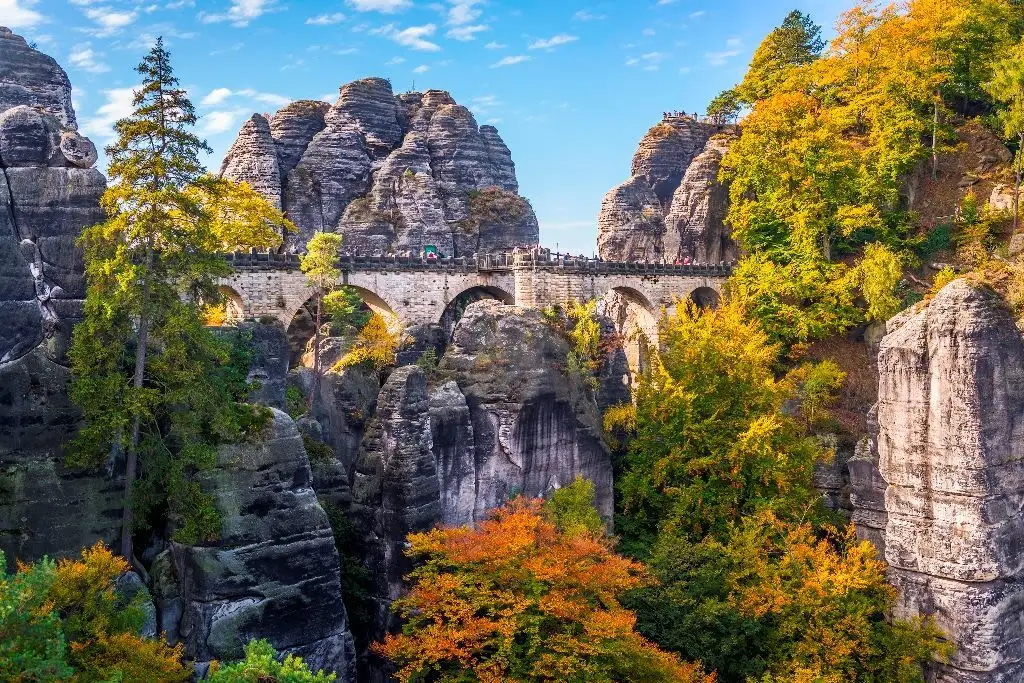
An Active Adventure to Berlin, Dresden, Prague, and the Saxon Switzerland
 10 Day Tour of Berlin, Dresden and Prague
10 Day Tour of Berlin, Dresden and Prague
Overview
Trip Map
Itinerary
Inclusions
Reviews

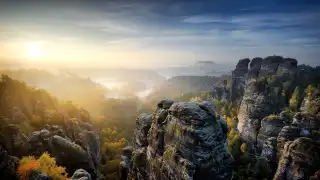

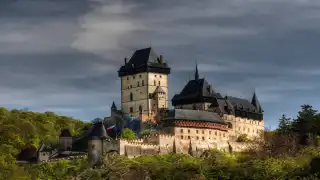



10 Days 9 Nights
Best Time: Jan-Dec
Outdoor Activities
Nature Lovers
Uncover hidden histories local cultures, and natural beauty on this active adventure to Berlin, Dresden, and Prague. Explore Berlin on a private guided cycling tour and see iconic landmarks like the Brandenburg Gate. Discover Dresden's baroque Old Town and venture into the countryside to see the natural wonders of Saxon Switzerland. Check out Prague's incredible beauty, from Charles Bridge to Prague Castle, and take a guided cycling tour through the Czech countryside to a castle. Throughout the trip, enjoy the benefits of our detailed itinerary and mobile app, making your adventure not only exciting but seamless.
- Navigate Berlin's hidden courtyards and climb the glass dome of the Reichstag for epic city views.
- Admire the baroque beauty of Dresden's Old Town on a guided walking tour.
- Discover Saxon Switzerland's natural wonders on a self-guided excursion.
- Explore Prague's fairytale environs on an expert-led tour of Prague Castle and the Royal Route.
- Cycle through the Czech countryside to the forest-shrouded Karlstejn Castle.
Uncover hidden histories local cultures, and natural beauty on this active adventure to Berlin, Dresden, and Prague. Explore Berlin on a private guided cycling tour and see iconic landmarks like the Brandenburg Gate. Discover Dresden's baroque Old Town and venture into the countryside to see the natural wonders of Saxon Switzerland. Check out Prague's incredible beauty, from Charles Bridge to Prague Castle, and take a guided cycling tour through the Czech countryside to a castle. Throughout the trip, enjoy the benefits of our detailed itinerary and mobile app, making your adventure not only exciting but seamless.
- Navigate Berlin's hidden courtyards and climb the glass dome of the Reichstag for epic city views.
- Admire the baroque beauty of Dresden's Old Town on a guided walking tour.
- Discover Saxon Switzerland's natural wonders on a self-guided excursion.
- Explore Prague's fairytale environs on an expert-led tour of Prague Castle and the Royal Route.
- Cycle through the Czech countryside to the forest-shrouded Karlstejn Castle.

The Brandenburg Gate
Historic Landmarks

The Berlin Wall
Historic Landmarks

Checkpoint Charlie
European History

The Albertinum
Museums & Galleries

Church of our Lady
Churches & Monasteries

Zwinger
Museums & Galleries

Prague Castle
Castles & Chateaux

Charles Bridge
Historic Landmarks

Wenceslas Square
European History
Must see sights

The Brandenburg Gate
Historic Landmarks

The Berlin Wall
Historic Landmarks

Checkpoint Charlie
European History

The Albertinum
Museums & Galleries

Church of our Lady
Churches & Monasteries

Zwinger
Museums & Galleries

Prague Castle
Castles & Chateaux

Charles Bridge
Historic Landmarks

Wenceslas Square
European History
Starting from
$1995
per person
 Not included
Not included Secure Your Customizable Trip
Enter your details to embark on a journey that can be tailored just for you.
Start
Travelers
0 travelers
Add Room
Remove Room
Preferred Hotel Stars
Select Hotel Stars
Craft Your Own Itinerary
Select your interests and destinations for a trip plan inspired by you.
Bohemian & Saxon Highlights Trip - Map & Itinerary
Enable/Disable Map Scrolling
Click To Make Map Interactive

Bohemian & Saxon Highlights Trip Timeline
 Edit Details
Edit DetailsArrival
3 nights
Berlin
Germany
Train: 2h
2 nights
Dresden
Germany
Train: 2.5h
4 nights
Prague
Czech Republic
Departure
Day-By-Day Itinerary of Bohemian & Saxon Highlights Trip

Day 1
Arrive Berlin
Day 1
Arrive Berlin



To Be Determined
Airport Transfer
Flying into Berlin you will arrive in the brand new Berlin Brandenburg Airport to the south of the city. Taxis are available at the airport, or you can arrange a private transfer for added convenience. The cheapest and fastest way to reach central Berlin is by train. The Airport Express train delivers you to Berlin's main station (Hauptbahnhof) in the center of the city, from where you can easily hail a taxi.

Day 1
Arrive Berlin


Day 1
Arrive Berlin




To Be Determined:
Airport Transfer
Mid-Day/Afternoon:
TV Tower & Old Berlin
Late Afternoon/Early Evening:
Courtyards of Berlin

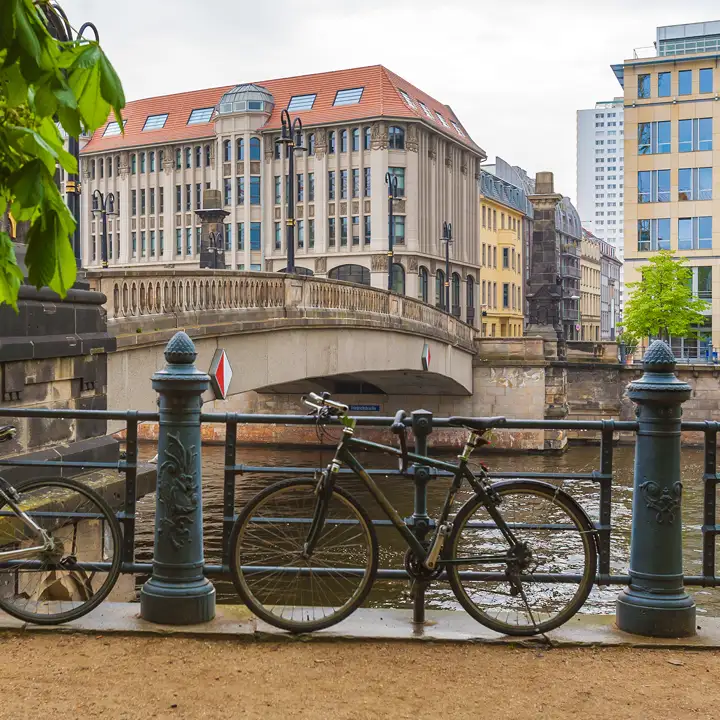
Day 2
Berlin
Day 2
Berlin



9:30 AM - 12:00 PM
Guided Bike Tour of Berlin
It is said that some cities were made for pedestrians, and others were made for cars. In that case then, Berlin was made for bicycles. Nearly perfectly flat, and filled with beautiful parks and broad avenues, Berlin is crisscrossed by one of the world’s most extensive networks of urban bike paths and lanes. You will cycle past grand architecture, through green parks, and along charming canals, exploring Berlin in a unique and memorable way.

Day 2
Berlin


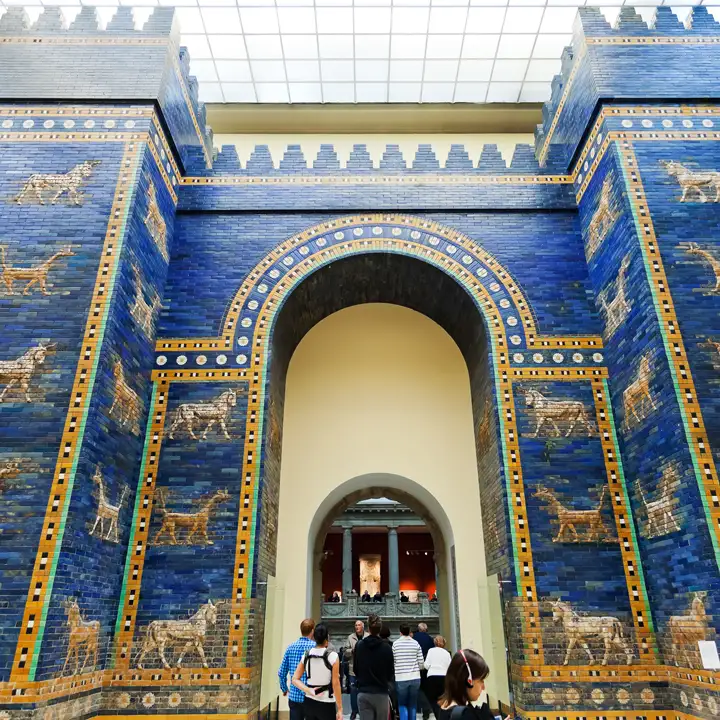
Day 3
Berlin
Day 3
Berlin


Morning to Afternoon
Museum Island
This island in the River Spree is home to five world-renowned museums, which could easily fill up a whole trip just by themselves. The island is covered in trees and green lawns, while the classically-inspired architecture of the museums can be enjoyed without even stepping inside. Unfortunately, the biggest star of the island, the Pergamon Museum, with its wholly reconstructed ancient buildings, is closed until 2026 for renovations. However, you can still visit a massive 360-panorama depicting the ancient city of Pergamon, and there's still more museums to visit than you could possibly fit in. Also to be found on and around Museum Island are the majestic Berliner Dom cathedral and the huge Berlin Palace.
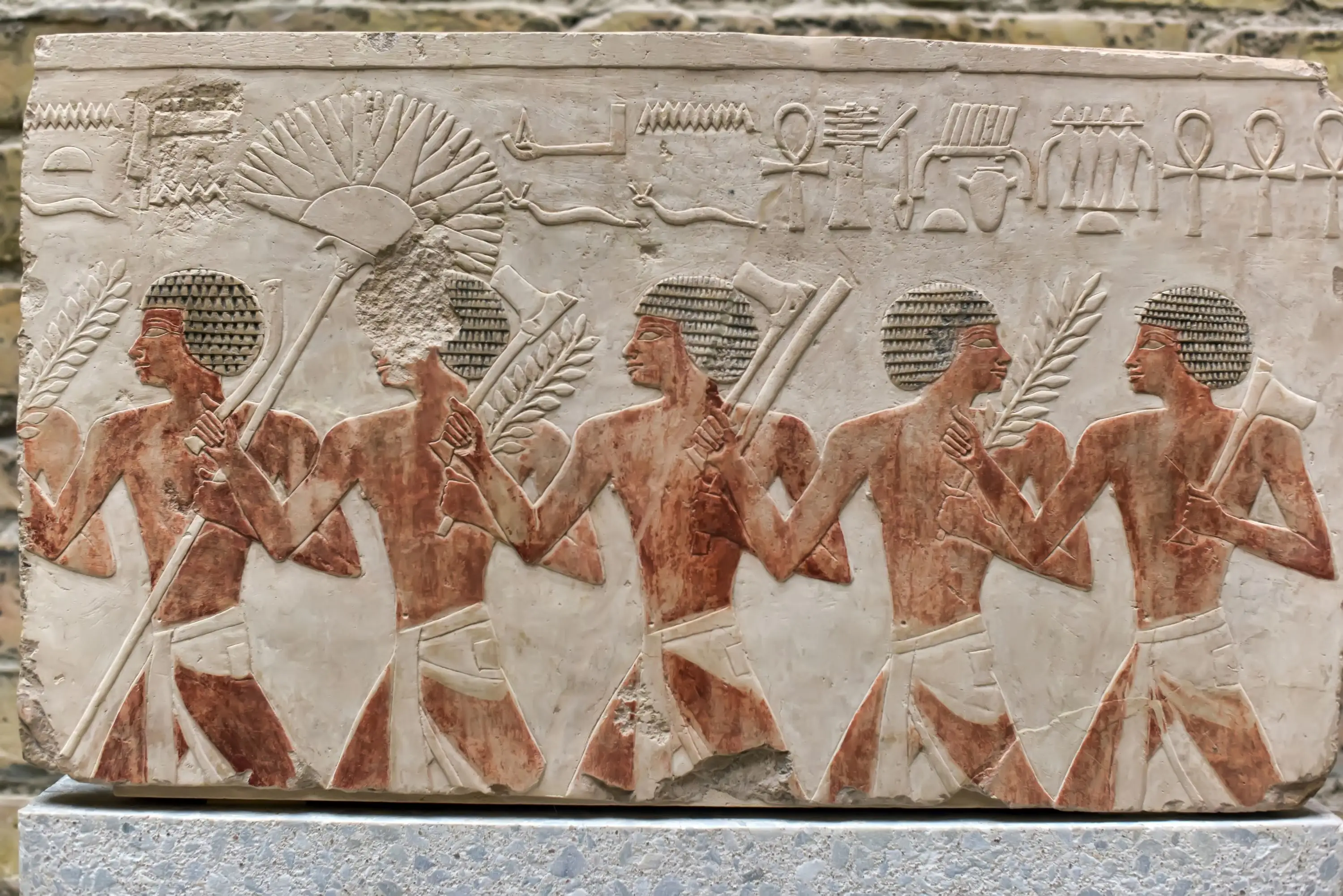
Neues Museum
Stare into the eyes of the famed Egyptian queen Nefertiti and see other ancient artwork and archeological artifacts.
Show More

Berliner Dom
Climb 270 steps to the top of this massive 19th century cathedral for a unique panoramic view of the city.
Show More

Pergamonmuseum
Relive the past in one of the world's premier museums of archealogy and ancient art. You can step into enormous ancient structures, wholly reconstructed.
Show More

Neues Museum
Stare into the eyes of the famed Egyptian queen Nefertiti and see other ancient artwork and archeological artifacts.
Show More

Berliner Dom
Climb 270 steps to the top of this massive 19th century cathedral for a unique panoramic view of the city.
Show More

Pergamonmuseum
Relive the past in one of the world's premier museums of archealogy and ancient art. You can step into enormous ancient structures, wholly reconstructed.
Show More

Neues Museum
Stare into the eyes of the famed Egyptian queen Nefertiti and see other ancient artwork and archeological artifacts.
Show More
prev
next

Day 3
Berlin


Neues Museum
 Highlight of Museum Island
Highlight of Museum IslandStare into the eyes of the famed Egyptian queen Nefertiti and see other ancient artwork and archeological artifacts.
The New Museum was opened in 1859 to relieve pressure on the over-crowded Old Museum. The three exhibition floors were decorated by leading Classical painters, with a focal point being a grand staircase winding up all three stories. Exhibits include the archaeological collections of the Egyptian Museum and Papyrus Collection, the Museum of Pre- and Early History, and the Collection of Classical Antiquities. The 3300-year-old bust of Egyptian Queen Nefertiti is the showstopper.
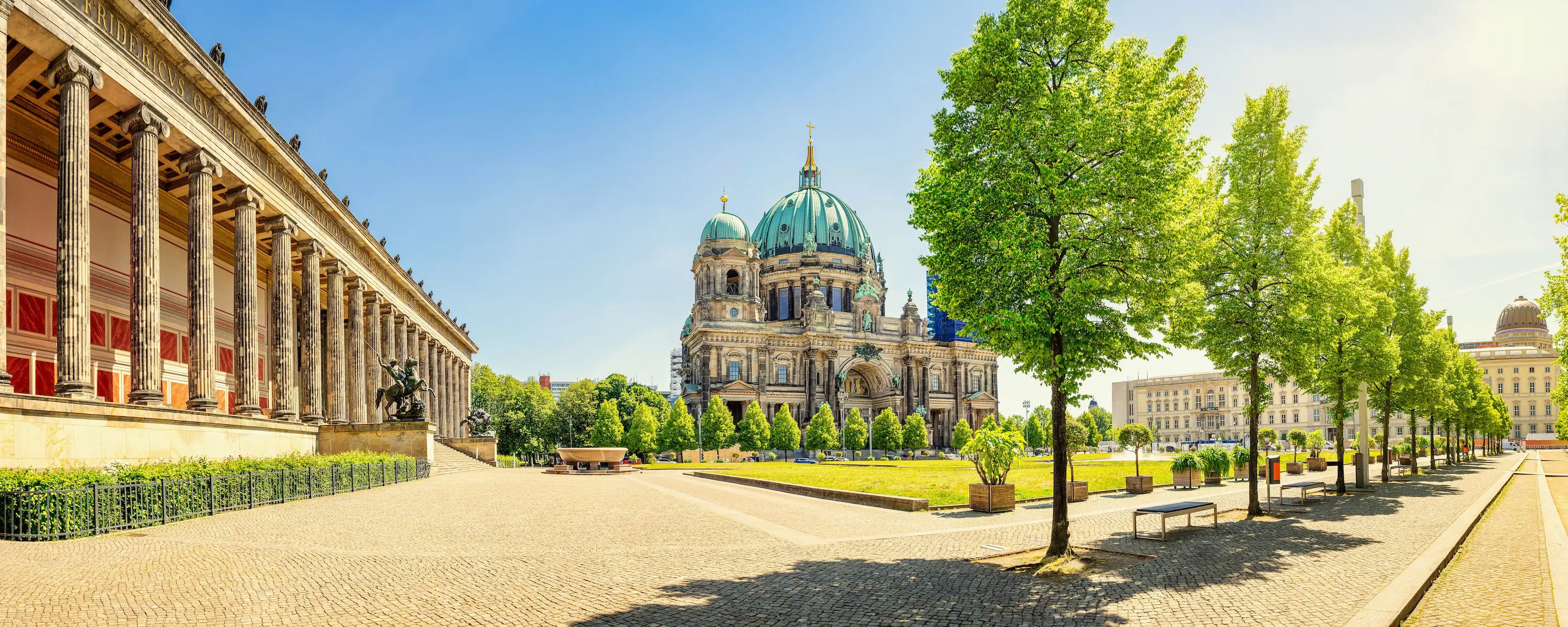
Berliner Dom
 Highlight of Museum Island
Highlight of Museum IslandClimb 270 steps to the top of this massive 19th century cathedral for a unique panoramic view of the city.
Berlin Cathedral, nestled on Museum Island, epitomizes German neo-Renaissance grandeur with its striking dome. Built from 1894 to 1905 and restored post-World War II, its lavish interior, stained glass, and notable pipe organ draw visitors. Beyond a place of worship, it houses the former imperial ruling family's, the Hohenzollern, crypt, revealing the dynastic past of Germany.
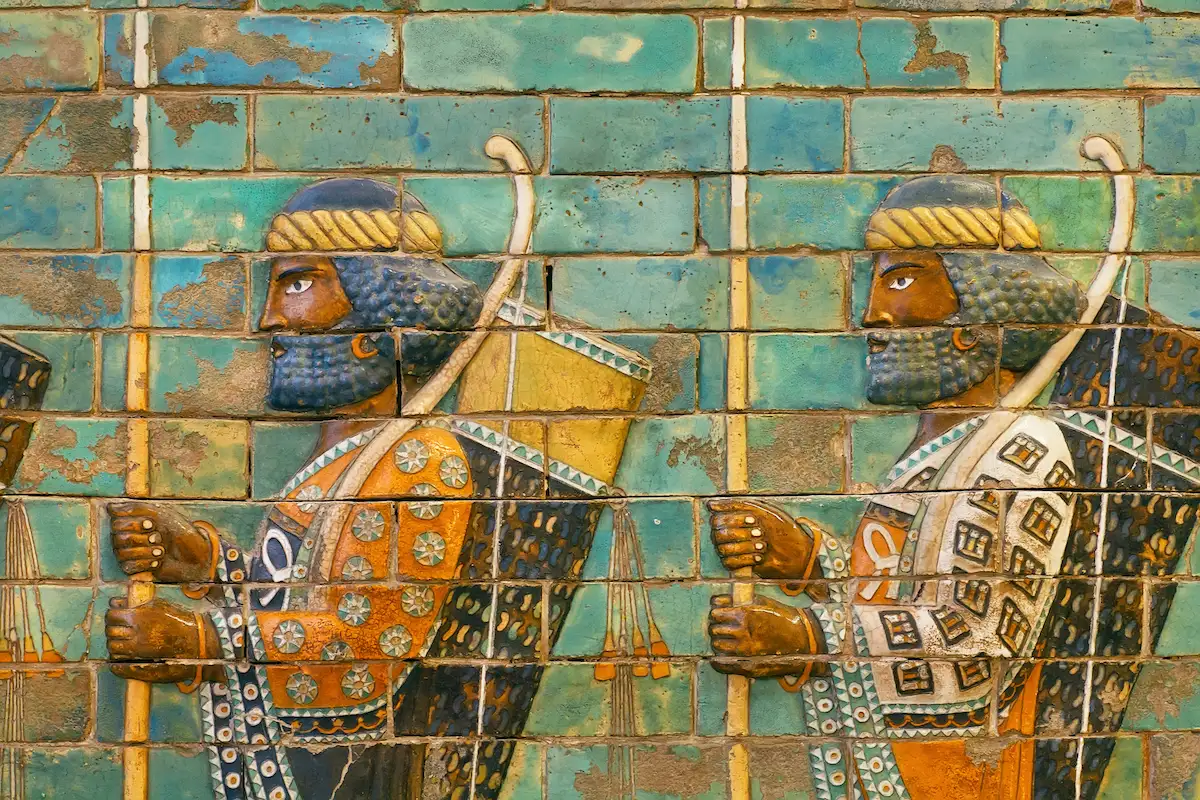
Pergamonmuseum
 Highlight of Museum Island
Highlight of Museum IslandRelive the past in one of the world's premier museums of archealogy and ancient art. You can step into enormous ancient structures, wholly reconstructed.
The museum is a jaw-dropping feast of classical sculpture and monumental architecture from Greece, Rome, Babylon and the Middle East divided into three parts. Highlights include the radiant-blue Ishtar Gate from Babylon, the Roman Market Gate of Miletus and the Caliph's Palace of Mshatta.

Neues Museum
 Highlight of Museum Island
Highlight of Museum IslandStare into the eyes of the famed Egyptian queen Nefertiti and see other ancient artwork and archeological artifacts.
The New Museum was opened in 1859 to relieve pressure on the over-crowded Old Museum. The three exhibition floors were decorated by leading Classical painters, with a focal point being a grand staircase winding up all three stories. Exhibits include the archaeological collections of the Egyptian Museum and Papyrus Collection, the Museum of Pre- and Early History, and the Collection of Classical Antiquities. The 3300-year-old bust of Egyptian Queen Nefertiti is the showstopper.

Berliner Dom
 Highlight of Museum Island
Highlight of Museum IslandClimb 270 steps to the top of this massive 19th century cathedral for a unique panoramic view of the city.
Berlin Cathedral, nestled on Museum Island, epitomizes German neo-Renaissance grandeur with its striking dome. Built from 1894 to 1905 and restored post-World War II, its lavish interior, stained glass, and notable pipe organ draw visitors. Beyond a place of worship, it houses the former imperial ruling family's, the Hohenzollern, crypt, revealing the dynastic past of Germany.

Pergamonmuseum
 Highlight of Museum Island
Highlight of Museum IslandRelive the past in one of the world's premier museums of archealogy and ancient art. You can step into enormous ancient structures, wholly reconstructed.
The museum is a jaw-dropping feast of classical sculpture and monumental architecture from Greece, Rome, Babylon and the Middle East divided into three parts. Highlights include the radiant-blue Ishtar Gate from Babylon, the Roman Market Gate of Miletus and the Caliph's Palace of Mshatta.

Neues Museum
 Highlight of Museum Island
Highlight of Museum IslandStare into the eyes of the famed Egyptian queen Nefertiti and see other ancient artwork and archeological artifacts.
The New Museum was opened in 1859 to relieve pressure on the over-crowded Old Museum. The three exhibition floors were decorated by leading Classical painters, with a focal point being a grand staircase winding up all three stories. Exhibits include the archaeological collections of the Egyptian Museum and Papyrus Collection, the Museum of Pre- and Early History, and the Collection of Classical Antiquities. The 3300-year-old bust of Egyptian Queen Nefertiti is the showstopper.
prev
next

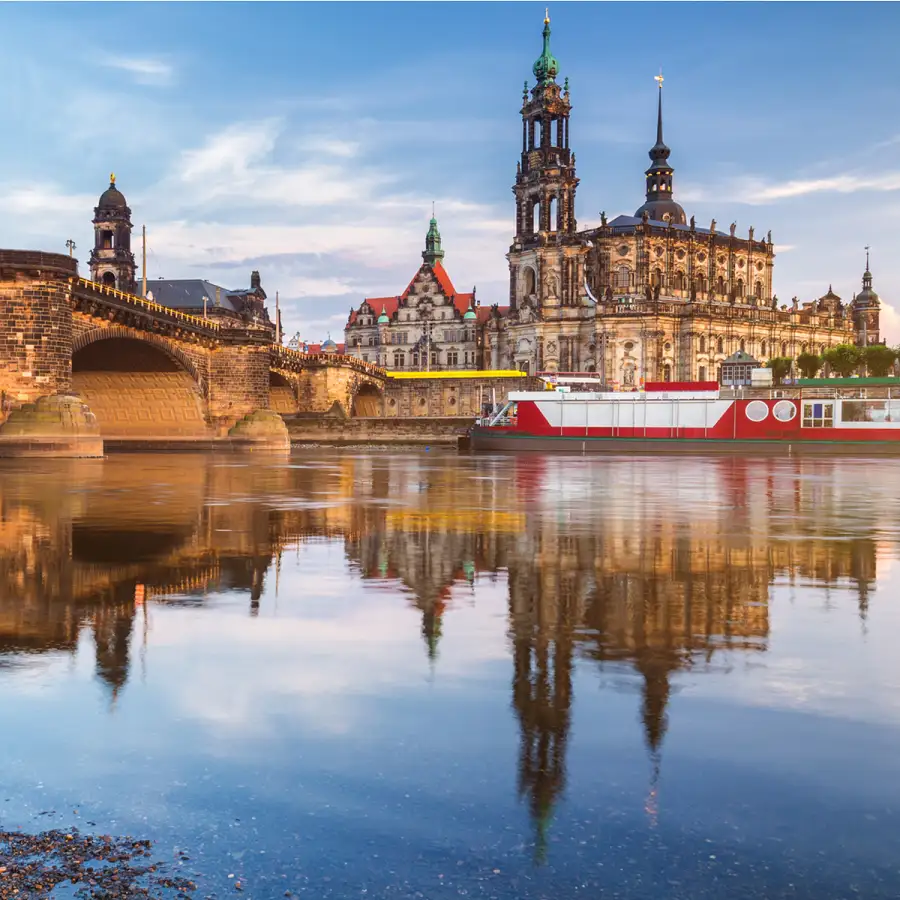
Day 4
Berlin to Dresden
Day 4
Berlin to Dresden






10:10 AM
Transfer to Rail Station
Most trains depart from Berlin Hbf station, the largest station in the city. Before spending money on a transfer, be sure to check whether your hotel is within easy walking distance. It is well connected by public transport, including U-bahn, S-bahn, and bus, making it relatively easy and often fastest to reach by public transport. However, if traveling with bags, you may prefer the convenience of taking a taxi, Uber, or private transfer. Berlin taxis are generally reliable and honest. If you are staying in central Berlin and are picked up one hour prior to departure, you should have time to catch your train.

Day 4
Berlin to Dresden


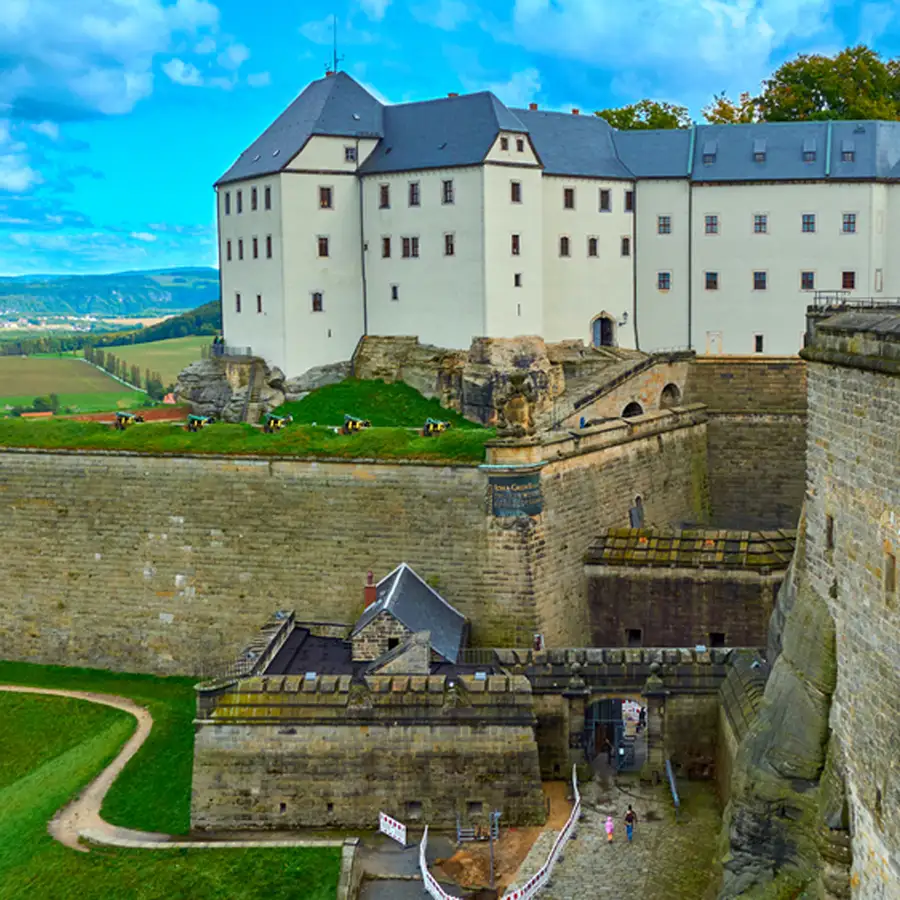
Day 5
Dresden
Day 5
Dresden


Early Morning to Late Afternoon
Saxon Switzerland
Located about 45 minutes south of Dresden, the Saxon Switzerland National Park has over 1,100 chalk-sandstone peaks amidst a fantastic landscape carved by the Elbe River. An extensive network of trails covers the park, as well as the adjoining Bohemian Switzerland National Park across the border in the Czech Republic, making it easy to experience one of Central Europe's most scenic natural areas. It is a place with something for everyone, offering hiking, river sports, and many beautiful places to relax and enjoy the scenery. It is also home to Königstein Fortress, one of Saxony's most famous historic sites.
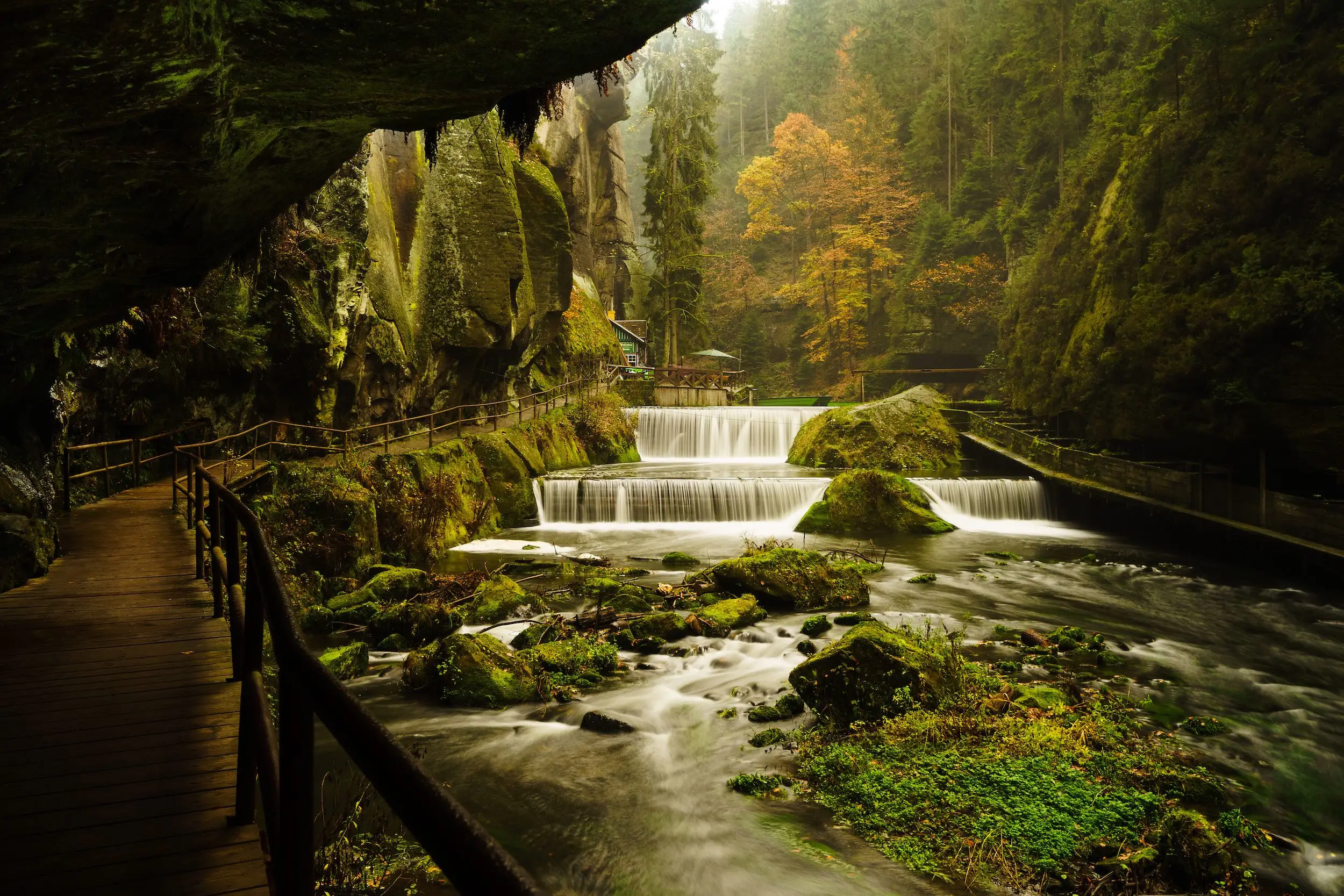
Kamenice Gorge
Journey by boat into an enchanting river gorge.
Show More
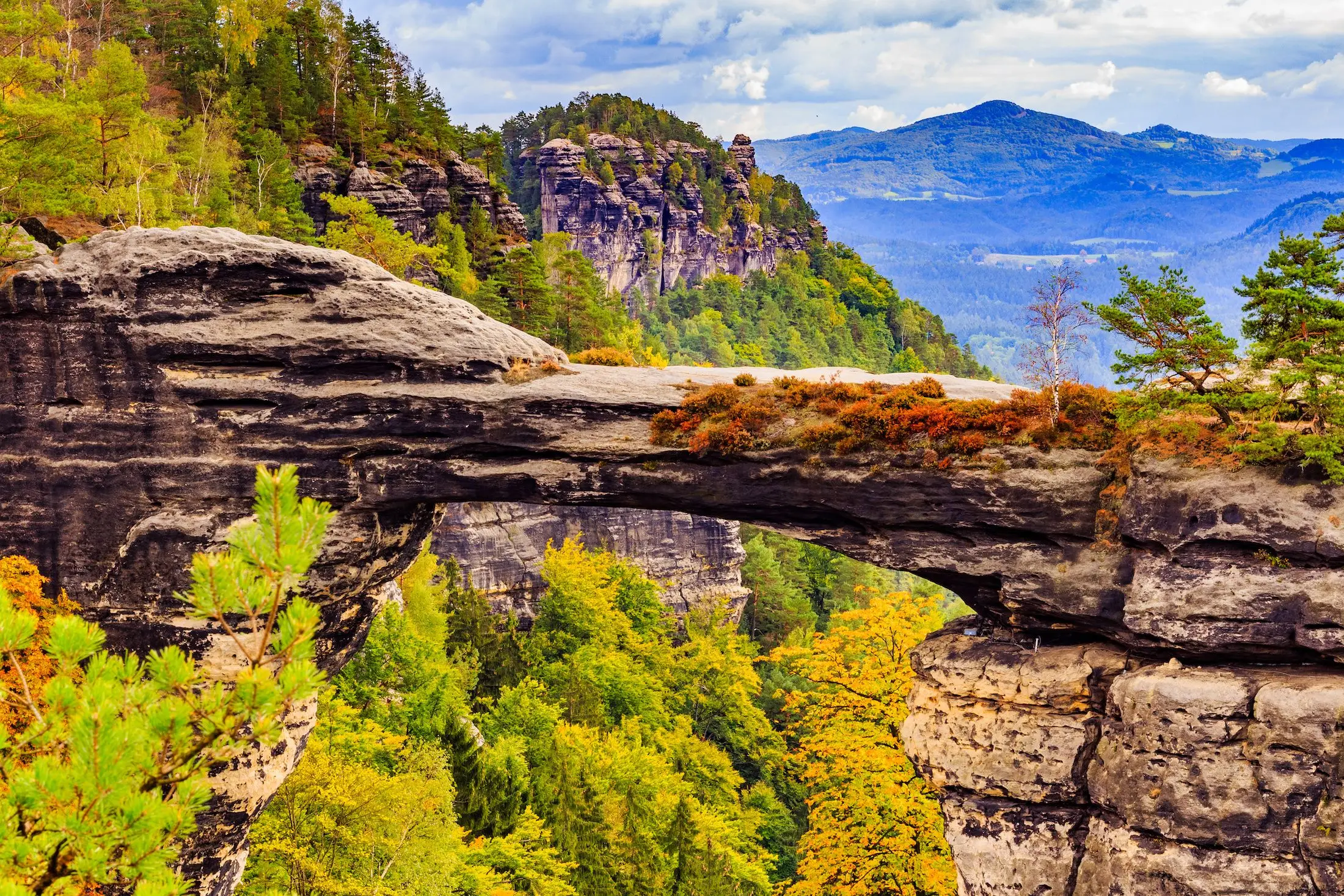
Pravčická Archway
See the largest stone archway in all of Europe.
Show More
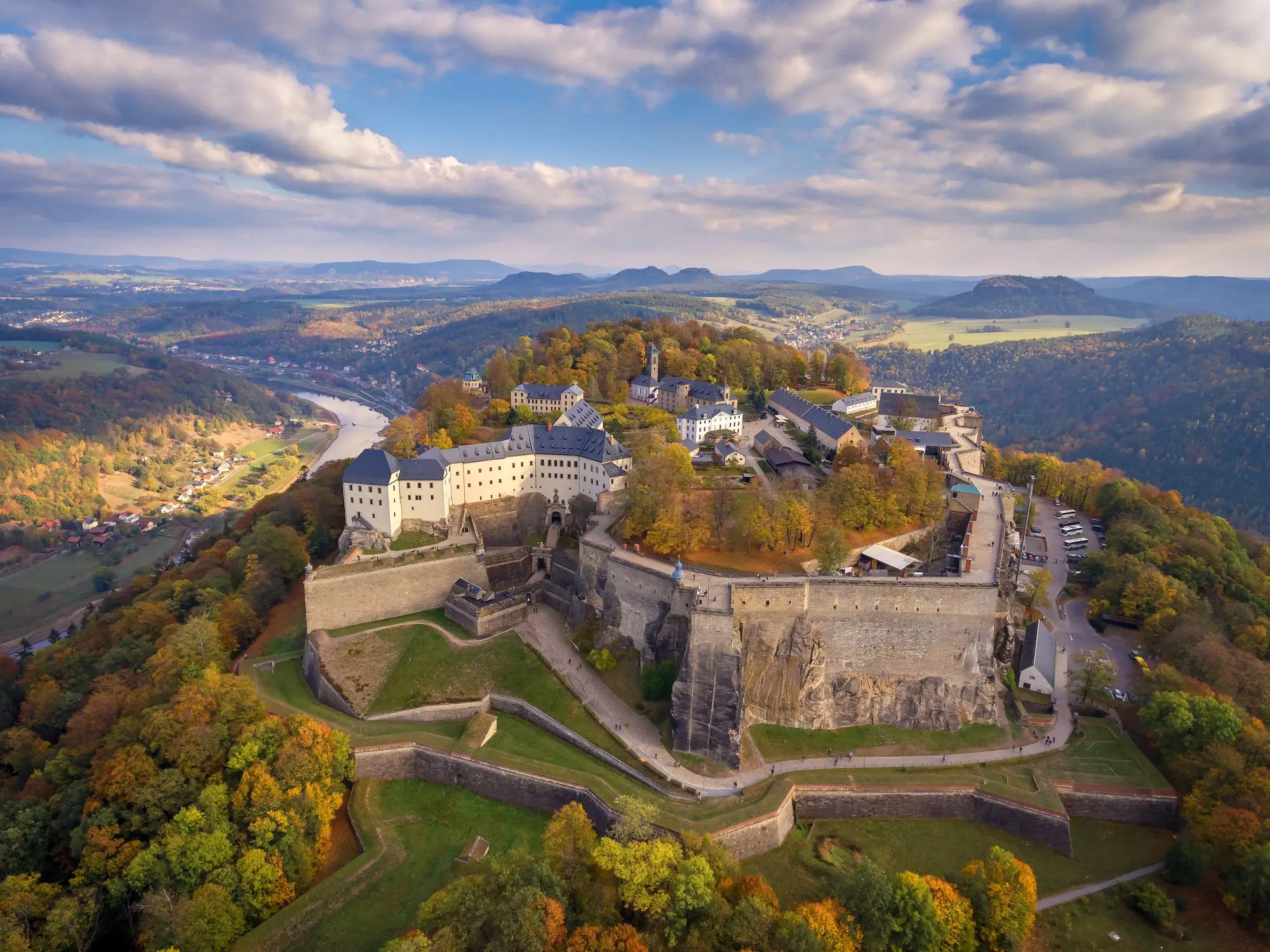
Königstein Fortress
Visit a colossal fortress perched on a clifftop overlooking the River Elbe.
Show More
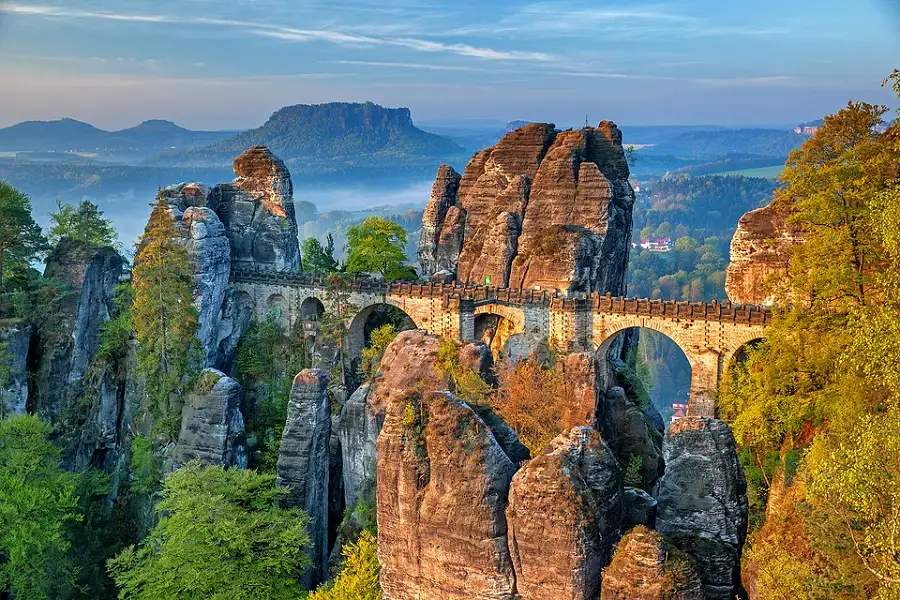
Bastei Bridge
Cross a bridge which soars across Europe's deepest river canyon.
Show More

Kamenice Gorge
Journey by boat into an enchanting river gorge.
Show More

Pravčická Archway
See the largest stone archway in all of Europe.
Show More

Königstein Fortress
Visit a colossal fortress perched on a clifftop overlooking the River Elbe.
Show More

Bastei Bridge
Cross a bridge which soars across Europe's deepest river canyon.
Show More
prev
next

Day 5
Dresden


Kamenice Gorge
 Highlight of Saxon Switzerland
Highlight of Saxon SwitzerlandJourney by boat into an enchanting river gorge.
Located just over the Czech border in the so-called Bohemian Switzerland, the gorge is a sandstone canyon formed over 100 million years ago. Venturing within is like entering a fairy tale. You'll squeeze between narrow gaps in the cliff faces, beneath bizarre rock formations and stone pillars. Eventually the way becomes too wild and narrow even for a small boat, and you can continue exploring on foot.

Pravčická Archway
 Highlight of Saxon Switzerland
Highlight of Saxon SwitzerlandSee the largest stone archway in all of Europe.
The hundred-thousand-year-old sandstone rock formation in the Bohemian Switzerland cannot be crossed but can be visited up close. In fact, one of the best view points of the national park is located directly beneath the arch. As you navigate the trails leading to the archway, you'll enjoy many amazing panoramic views and observe the startling variety of rock formations which rise out of the mountain tops.

Königstein Fortress
 Highlight of Saxon Switzerland
Highlight of Saxon SwitzerlandVisit a colossal fortress perched on a clifftop overlooking the River Elbe.
Sitting atop a nearly 1000 feet tall (247m) sandstone table mountain, the Königstein Fortress began as castle in the early 1200’s. In the 1500’s the fortifications were expanded to make it impregnable. But just as no one could break-in, no one could break out, and thus the fortress was eventually transformed into a state prison, which held politically important prisoners until the early 1900s. You’ll have two ways of reaching the fortress. The easy way; taking the “Fortress Express” bus to the top, or the old-fashioned way; hiking to the top.

Bastei Bridge
 Highlight of Saxon Switzerland
Highlight of Saxon SwitzerlandCross a bridge which soars across Europe's deepest river canyon.
The famous stone bridge "Bastei" is the must see in Saxon Switzerland. As you seek out the best photo spots, the sandstone towers and the Neurathen castle ruins will create an atmosphere of medieval fantasy. You'll gaze down at the river Elbe canyon and a surreally beautiful landscape.

Kamenice Gorge
 Highlight of Saxon Switzerland
Highlight of Saxon SwitzerlandJourney by boat into an enchanting river gorge.
Located just over the Czech border in the so-called Bohemian Switzerland, the gorge is a sandstone canyon formed over 100 million years ago. Venturing within is like entering a fairy tale. You'll squeeze between narrow gaps in the cliff faces, beneath bizarre rock formations and stone pillars. Eventually the way becomes too wild and narrow even for a small boat, and you can continue exploring on foot.

Pravčická Archway
 Highlight of Saxon Switzerland
Highlight of Saxon SwitzerlandSee the largest stone archway in all of Europe.
The hundred-thousand-year-old sandstone rock formation in the Bohemian Switzerland cannot be crossed but can be visited up close. In fact, one of the best view points of the national park is located directly beneath the arch. As you navigate the trails leading to the archway, you'll enjoy many amazing panoramic views and observe the startling variety of rock formations which rise out of the mountain tops.

Königstein Fortress
 Highlight of Saxon Switzerland
Highlight of Saxon SwitzerlandVisit a colossal fortress perched on a clifftop overlooking the River Elbe.
Sitting atop a nearly 1000 feet tall (247m) sandstone table mountain, the Königstein Fortress began as castle in the early 1200’s. In the 1500’s the fortifications were expanded to make it impregnable. But just as no one could break-in, no one could break out, and thus the fortress was eventually transformed into a state prison, which held politically important prisoners until the early 1900s. You’ll have two ways of reaching the fortress. The easy way; taking the “Fortress Express” bus to the top, or the old-fashioned way; hiking to the top.

Bastei Bridge
 Highlight of Saxon Switzerland
Highlight of Saxon SwitzerlandCross a bridge which soars across Europe's deepest river canyon.
The famous stone bridge "Bastei" is the must see in Saxon Switzerland. As you seek out the best photo spots, the sandstone towers and the Neurathen castle ruins will create an atmosphere of medieval fantasy. You'll gaze down at the river Elbe canyon and a surreally beautiful landscape.
prev
next

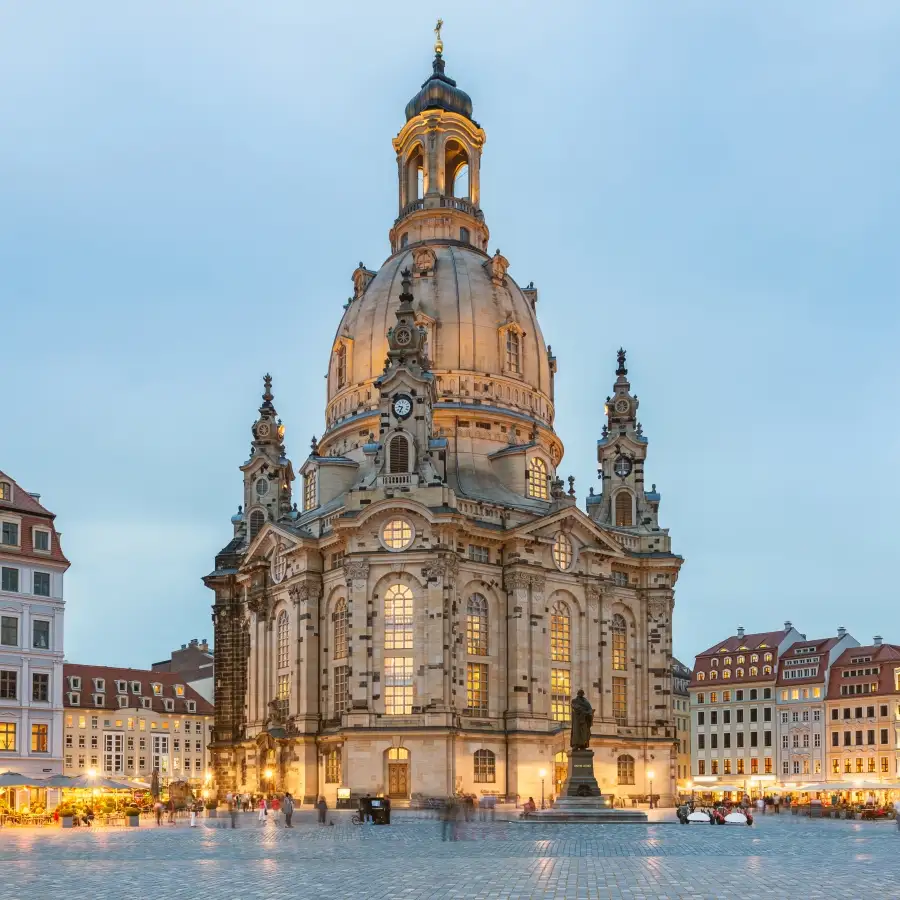
Day 6
Dresden to Prague
Day 6
Dresden to Prague





Morning
Old Town
Picturesquely located on a bend of the Elbe River, Dresden is the capital of the German federal state of Saxony and was long the royal residence for the Kings of Saxony. They transformed their home over the centuries into a splendid architectural jewel. Because of its fascinating baroque and rococo city center, as well as its art collections, Dresden was often called the “Florence on the Elbe”. But Dresden also became a major industrial center, making it a target in WWII. The entire city center was destroyed in a fire-bombing raid, and over 20,000 inhabitants died in the flames and rubble. After the war, the city’s former beauty was gradually reconstructed and Dresden is now again a leading center of art, culture and classical music. During your visit, you will have the opportunity to admire restored architectural gems, impressive museums, and rich art collections.
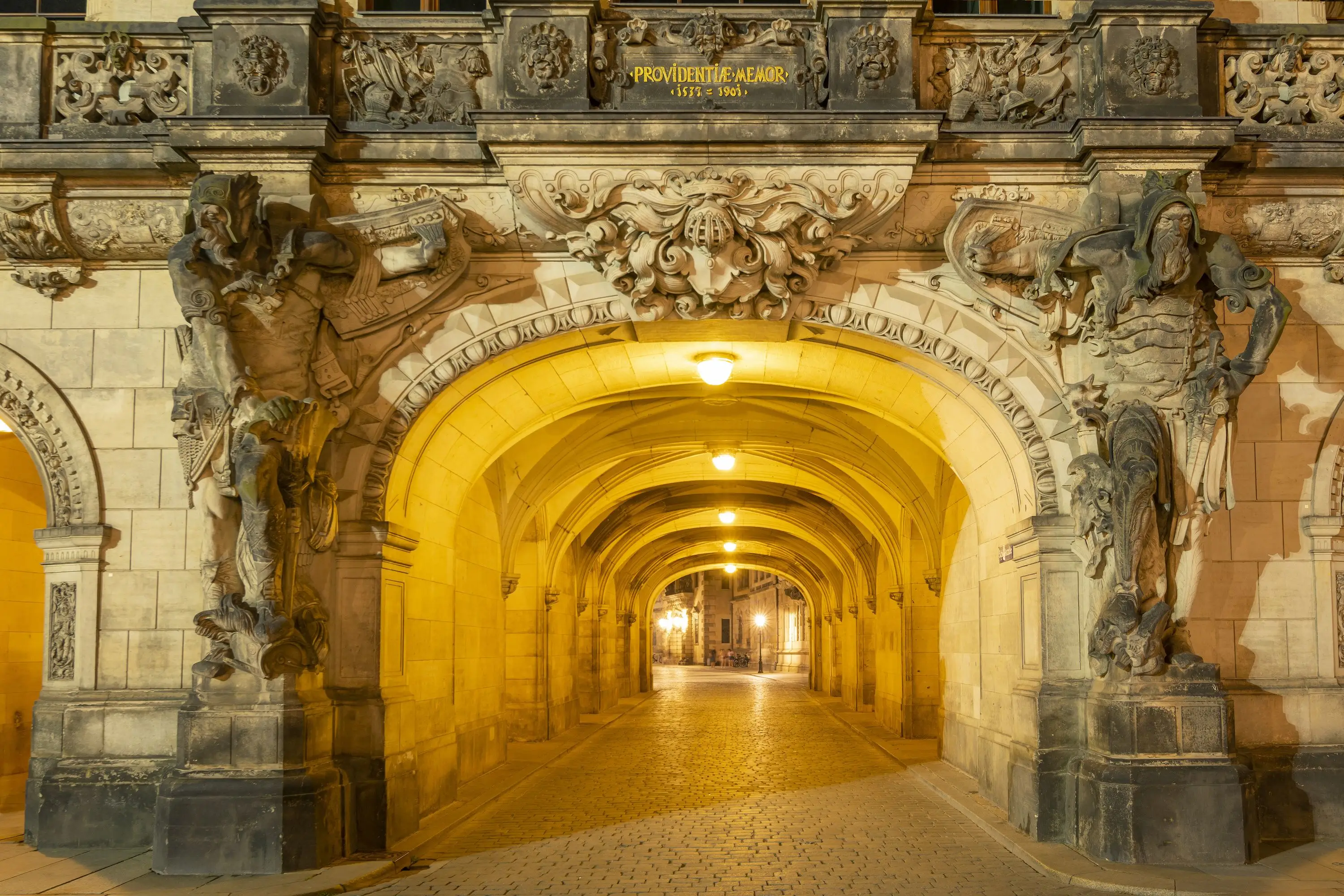
Residenzschloss (Dresden Castle)
Admire priceless treasures and gobsmacking architecture as you wander the corridors of this palace turned museum.
Show More
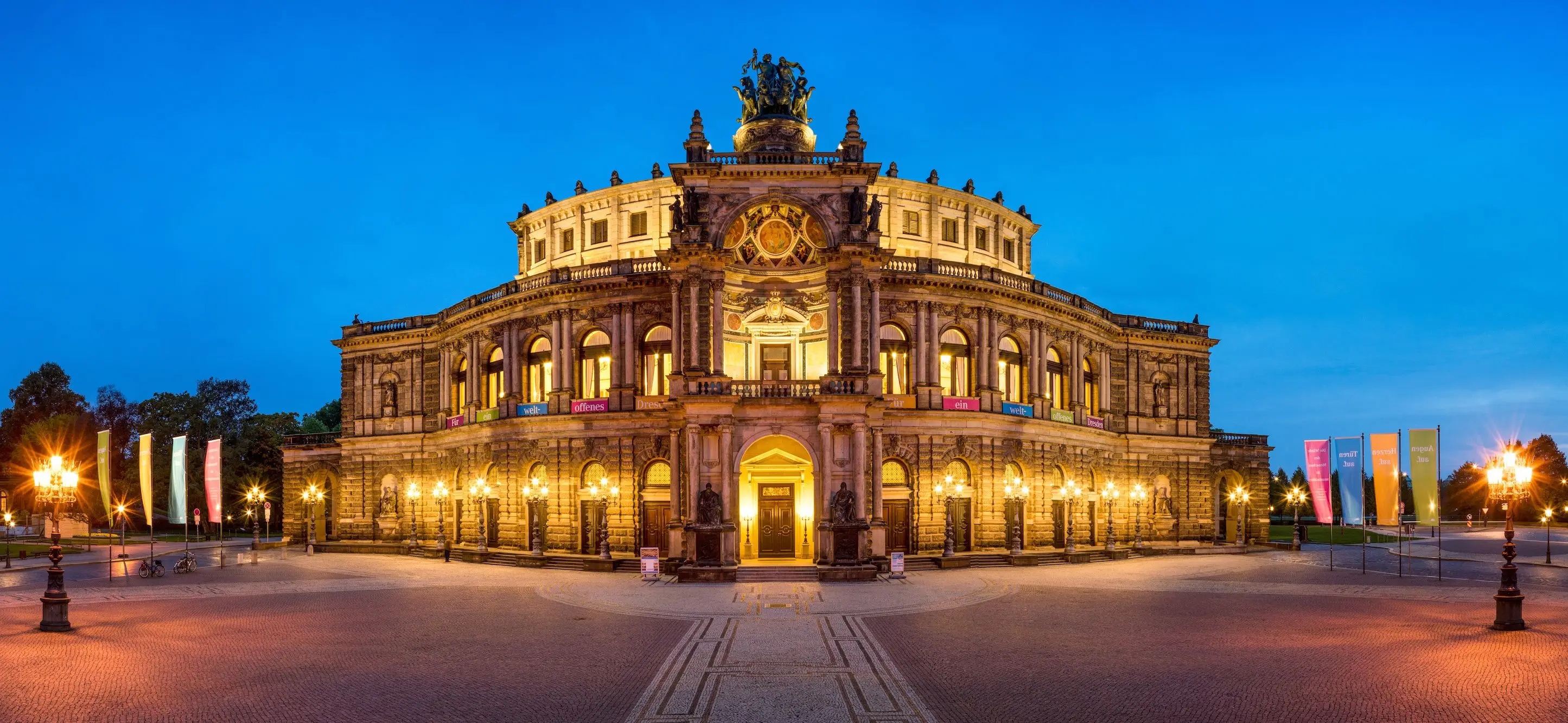
Semperoper
Tour one of Europe's most lavish opera houses.
Show More
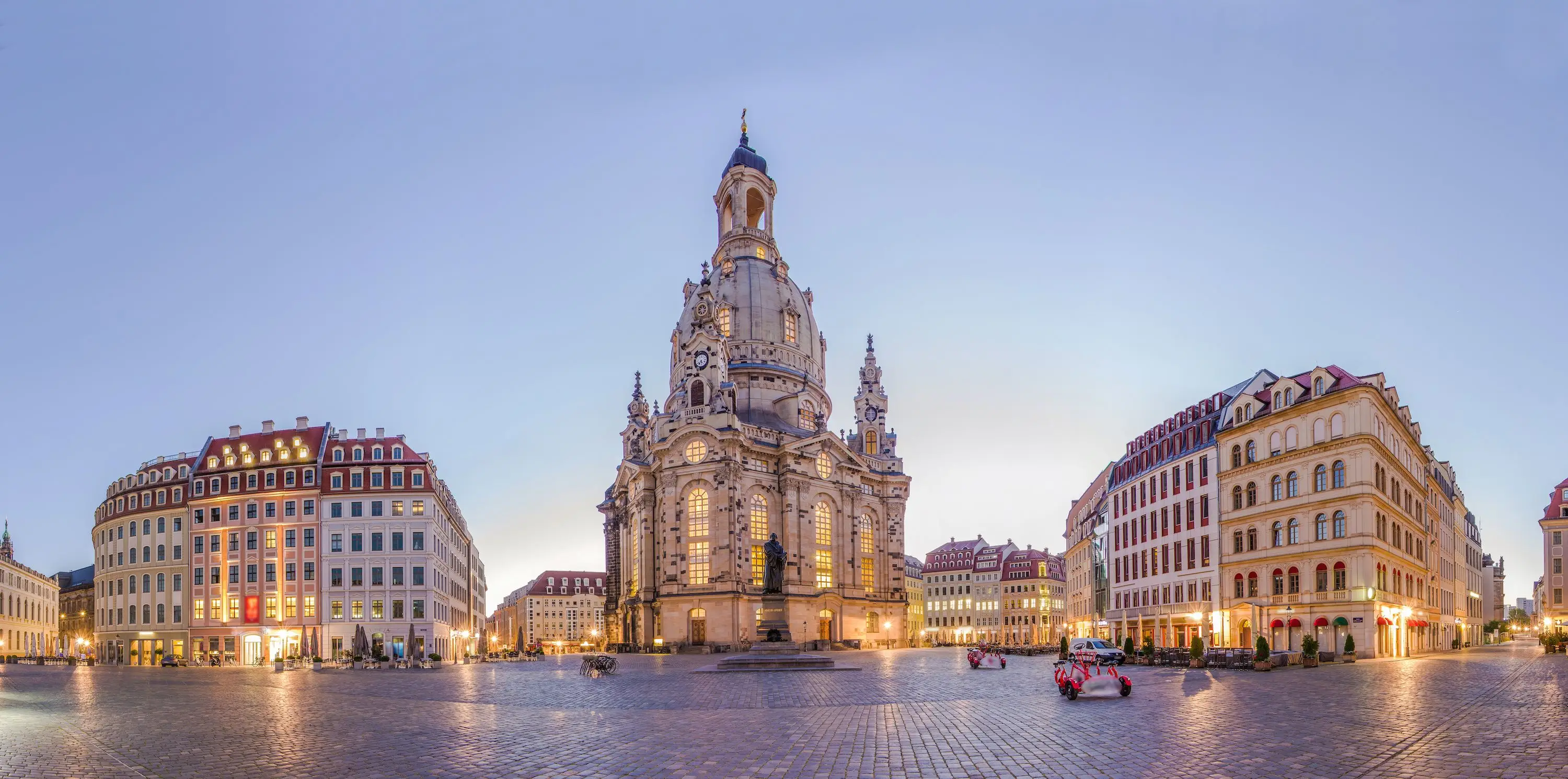
Frauenkirche
Take the elevator to peer into the breathtaking dome of Dresden's most beautiful and famous church, and to look out upon surrounding city.
Show More
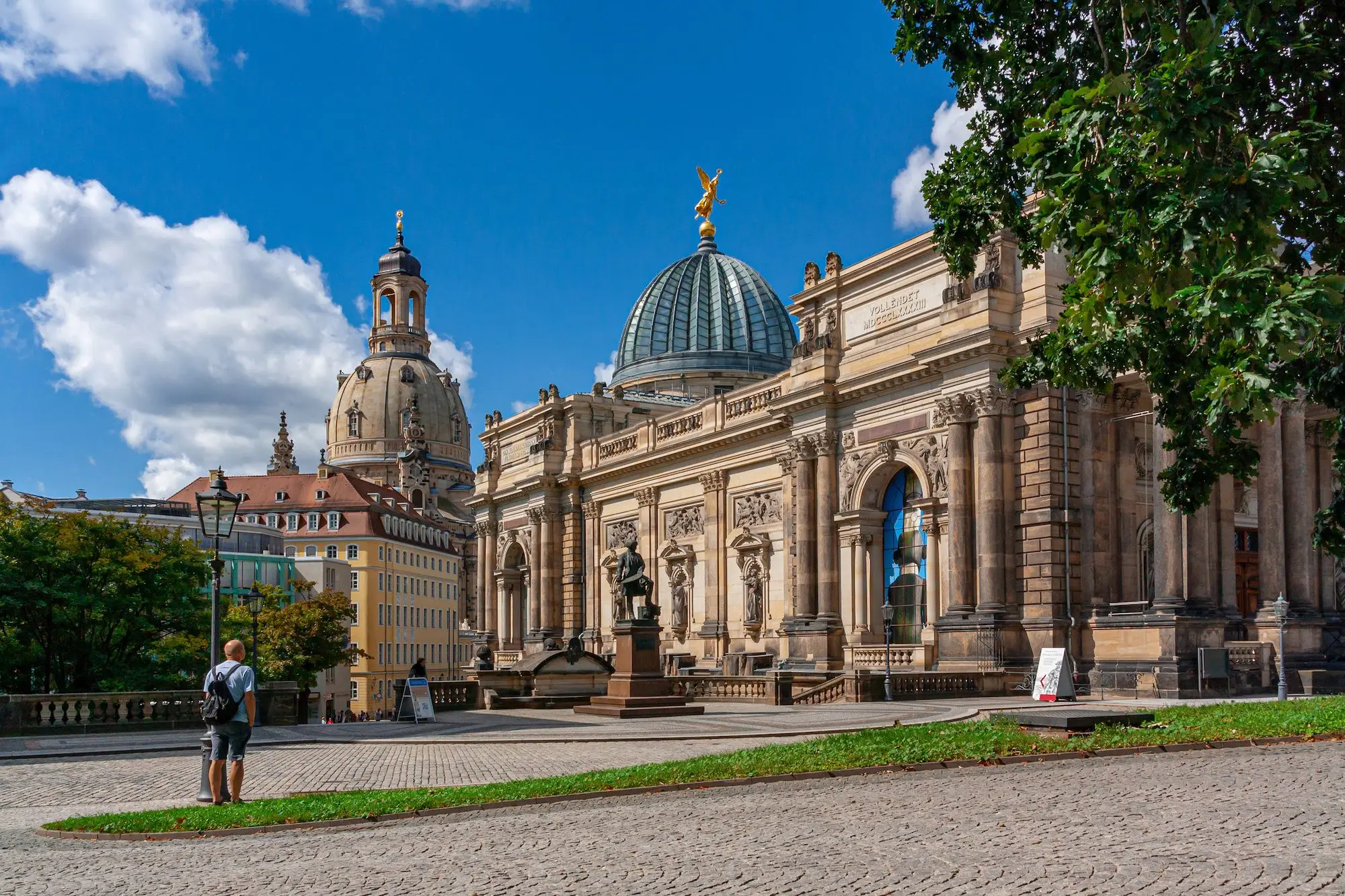
Albertinum
Visit the palatial Albertinum and experience an outstanding collection of 19th and 20th century art.
Show More

Residenzschloss (Dresden Castle)
Admire priceless treasures and gobsmacking architecture as you wander the corridors of this palace turned museum.
Show More

Semperoper
Tour one of Europe's most lavish opera houses.
Show More

Frauenkirche
Take the elevator to peer into the breathtaking dome of Dresden's most beautiful and famous church, and to look out upon surrounding city.
Show More

Albertinum
Visit the palatial Albertinum and experience an outstanding collection of 19th and 20th century art.
Show More
prev
next

Day 6
Dresden to Prague


Residenzschloss (Dresden Castle)
 Highlight of Old Town
Highlight of Old TownAdmire priceless treasures and gobsmacking architecture as you wander the corridors of this palace turned museum.
Flanked by statues of muscled warriors reflecting the might of Dresden's rulers, the Residenzschloss (or Royal Palace) is now a large museum complex housing Europe’s largest collection of treasures (the Green Vault) as well as imposing collections of coins, works on paper, weapons, and Ottoman art. Destroyed in WWII, it was not until 1985 that the communist regime finally began reconstruction and returned the famed Grünes Gewölbe (Green Vault) to the palace. It's a regular Ali Baba's cave of priceless silver, gold, diamond, ivory and mother-of-pearl craftsmanship that is one of the most outstanding treasuries on the planet.

Semperoper
 Highlight of Old Town
Highlight of Old TownTour one of Europe's most lavish opera houses.
Originally built in 1841, the hall was rebuilt by the original architect after a fire in 1869. Having been given a second chance, he did an even better job. Unfortunately, it had to rebuilt again after WWII, however it is now restored in all its glory, and with more modern stage equipment to boot. It's home to the Saxon State Orchestra, one of the world’s oldest orchestras. It was also the venue of Wagner premieres for Tannhäuser, Rienzi and The Flying Dutchman, making the Semper a household name. You can admire the beauty of its reconstructed interior during an English speaking guided tour, which starts daily at 3pm. As there is only one daily English tour, we recommend purchasing tickets in advance.

Frauenkirche
 Highlight of Old Town
Highlight of Old TownTake the elevator to peer into the breathtaking dome of Dresden's most beautiful and famous church, and to look out upon surrounding city.
This outstanding baroque Lutheran church was completely rebuilt after Germany’s reunification from the rubble that had deliberately been left on site as a reminder of the war. Go inside to admire its impressive interior or take an elevator to get an unforgettable view of the cupola, as well as the Old Town and the Elbe River. The church was built both as a symbol of Protestant self-assertion and Dresden's municipal wealth, and was so magnificent that it soon became a fixture on the European grand tour.

Albertinum
 Highlight of Old Town
Highlight of Old TownVisit the palatial Albertinum and experience an outstanding collection of 19th and 20th century art.
The palatial Albertinum is a museum housing works by Claude Monet, Vincent van Gogh, and Edgar Degas, as well as a Sculpture Collection - the main hall is worth a look without even purchasing a ticket and viewing the artworks on display. The Galerie Neue Meister spans the genres from the Romantics like Caspar David Friedrich to Modernists like Otto Dix, whose triptych, War, is a searing indictment of his time in the trenches during WWI.

Residenzschloss (Dresden Castle)
 Highlight of Old Town
Highlight of Old TownAdmire priceless treasures and gobsmacking architecture as you wander the corridors of this palace turned museum.
Flanked by statues of muscled warriors reflecting the might of Dresden's rulers, the Residenzschloss (or Royal Palace) is now a large museum complex housing Europe’s largest collection of treasures (the Green Vault) as well as imposing collections of coins, works on paper, weapons, and Ottoman art. Destroyed in WWII, it was not until 1985 that the communist regime finally began reconstruction and returned the famed Grünes Gewölbe (Green Vault) to the palace. It's a regular Ali Baba's cave of priceless silver, gold, diamond, ivory and mother-of-pearl craftsmanship that is one of the most outstanding treasuries on the planet.

Semperoper
 Highlight of Old Town
Highlight of Old TownTour one of Europe's most lavish opera houses.
Originally built in 1841, the hall was rebuilt by the original architect after a fire in 1869. Having been given a second chance, he did an even better job. Unfortunately, it had to rebuilt again after WWII, however it is now restored in all its glory, and with more modern stage equipment to boot. It's home to the Saxon State Orchestra, one of the world’s oldest orchestras. It was also the venue of Wagner premieres for Tannhäuser, Rienzi and The Flying Dutchman, making the Semper a household name. You can admire the beauty of its reconstructed interior during an English speaking guided tour, which starts daily at 3pm. As there is only one daily English tour, we recommend purchasing tickets in advance.

Frauenkirche
 Highlight of Old Town
Highlight of Old TownTake the elevator to peer into the breathtaking dome of Dresden's most beautiful and famous church, and to look out upon surrounding city.
This outstanding baroque Lutheran church was completely rebuilt after Germany’s reunification from the rubble that had deliberately been left on site as a reminder of the war. Go inside to admire its impressive interior or take an elevator to get an unforgettable view of the cupola, as well as the Old Town and the Elbe River. The church was built both as a symbol of Protestant self-assertion and Dresden's municipal wealth, and was so magnificent that it soon became a fixture on the European grand tour.

Albertinum
 Highlight of Old Town
Highlight of Old TownVisit the palatial Albertinum and experience an outstanding collection of 19th and 20th century art.
The palatial Albertinum is a museum housing works by Claude Monet, Vincent van Gogh, and Edgar Degas, as well as a Sculpture Collection - the main hall is worth a look without even purchasing a ticket and viewing the artworks on display. The Galerie Neue Meister spans the genres from the Romantics like Caspar David Friedrich to Modernists like Otto Dix, whose triptych, War, is a searing indictment of his time in the trenches during WWI.
prev
next

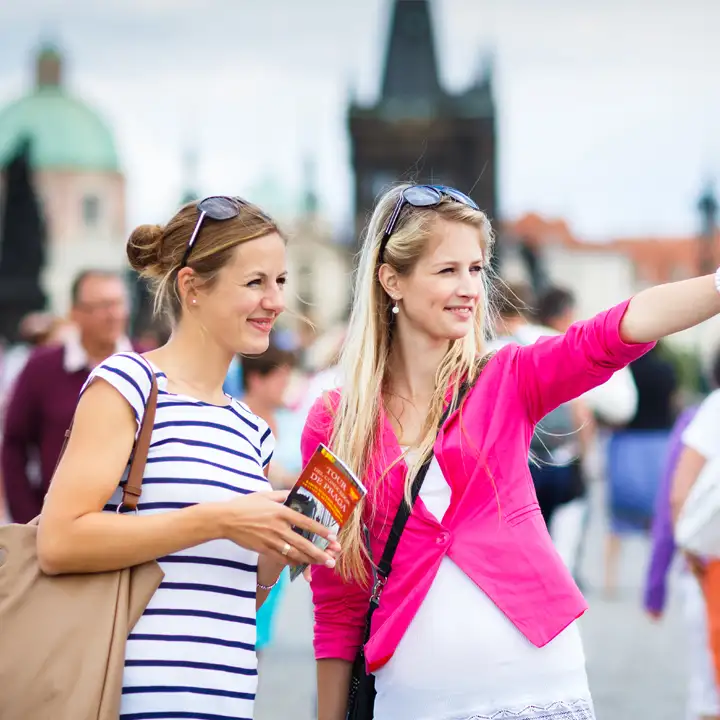
Day 7
Prague
Day 7
Prague



9:00 AM - 12:30 PM
Royal Route Guided Tour
On this charming guided walk, you will explore the Prague Castle, the largest castle complex in all of Europe. To reach the castle you will trace the Royal Coronation Route and cross the Charles Bridge, whose “speaking stones” reveal the amazing and often cruel history that occurred there. Your tour guide will then take you either through the castle courtyards and into the dramatic St. Vitus Cathedral in the center of the castle complex, or through the upper part of the castle district around the oversized palaces of the old Catholic nobility and the top of the Castle Steps for incomparable views over the red rooftops of the Little Quarter.

Charles Bridge
Cross the river dividing Prague's most historic neighborhoods, and experience one of Europe's most iconic landmarks.
Show More
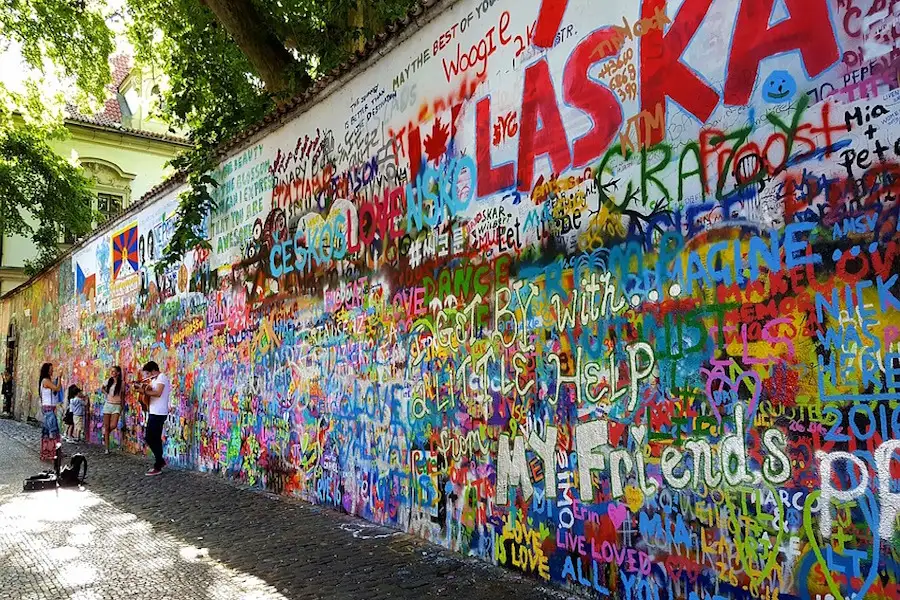
Maltese Square & Lennon Wall
See a historic wall that has been covered in John Lennon-inspired graffiti since Communist days.
Show More

Prague Castle
Prague Castle is one of the main attractions in Prague and is also the largest castle complex in the world.
Show More

Charles Bridge
Cross the river dividing Prague's most historic neighborhoods, and experience one of Europe's most iconic landmarks.
Show More

Maltese Square & Lennon Wall
See a historic wall that has been covered in John Lennon-inspired graffiti since Communist days.
Show More

Prague Castle
Prague Castle is one of the main attractions in Prague and is also the largest castle complex in the world.
Show More

Charles Bridge
Cross the river dividing Prague's most historic neighborhoods, and experience one of Europe's most iconic landmarks.
Show More
prev
next

Day 7
Prague

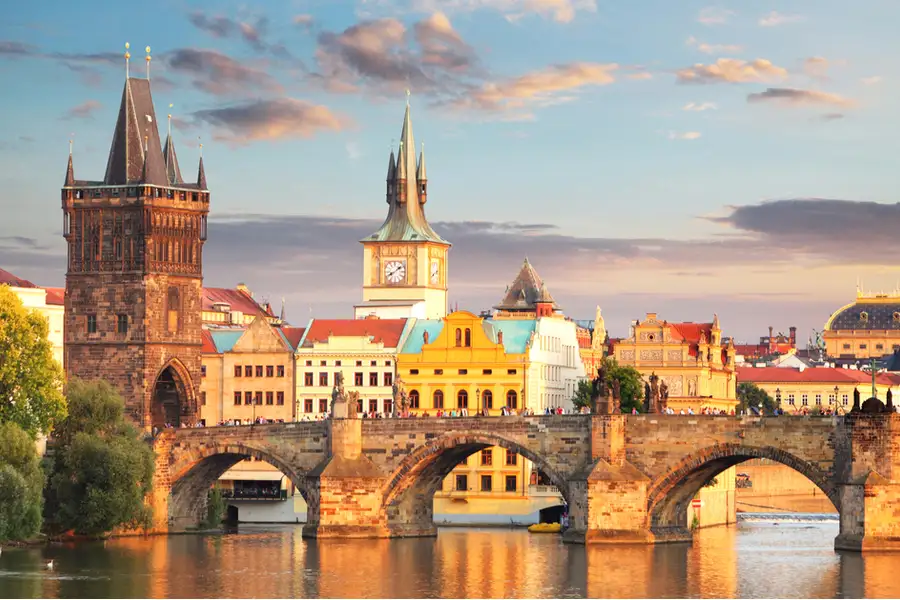
Charles Bridge
 Highlight of Royal Route Guided Tour
Highlight of Royal Route Guided TourCross the river dividing Prague's most historic neighborhoods, and experience one of Europe's most iconic landmarks.
Bridge construction began in 1357 under King Charles IV (hence the name), and it was the only bridge across the Vltava River until 1841. 30 baroque statues of saints line the bridge, and it is filled with street artists and entertainers. Not to be missed.

Maltese Square & Lennon Wall
 Highlight of Royal Route Guided Tour
Highlight of Royal Route Guided TourSee a historic wall that has been covered in John Lennon-inspired graffiti since Communist days.
The wall has been covered in graffiti since the 1960s, and during Communism anti-regime sentiment was common. John Lennon's assassination inspired grafitti reflecting his song, Imagine, which earned the wall its current moniker. It is now a favorite gathering place for tourists, and musicians sometimes congregate there as well. Just around the corner is the Maltese Square, which is one of Prague's more quaint and relaxed public spaces, despite being just off the main tourist route.
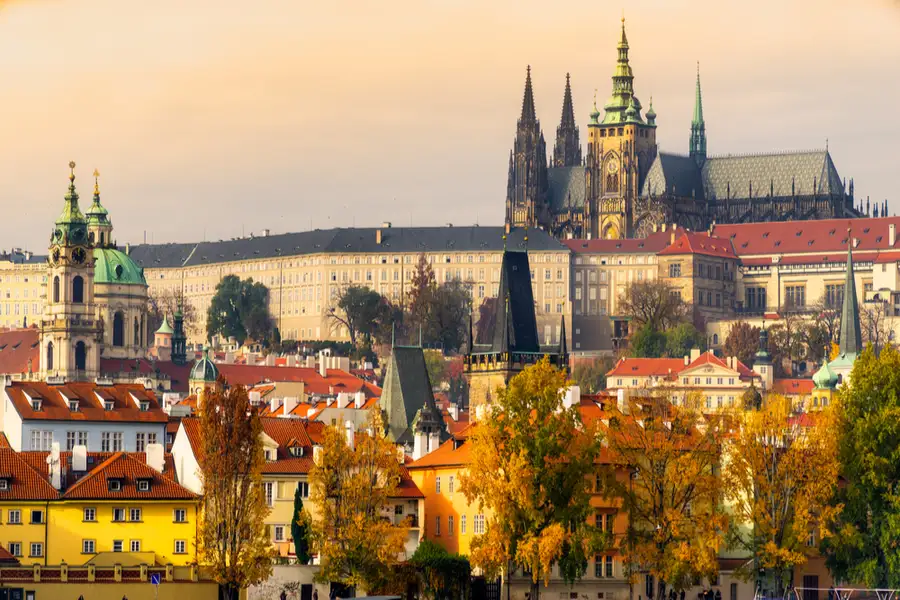
Prague Castle
 Highlight of Royal Route Guided Tour
Highlight of Royal Route Guided TourPrague Castle is one of the main attractions in Prague and is also the largest castle complex in the world.
The Prague Castle is the largest castle complex in the world with structures dating back to the 9th century. The St Vitus Cathedral and Basilica of St George can be found within the castle walls. The Prague Castle also includes several gardens, palaces, and a monastery. This castle was the seat of power for the Kings of Bohemia, Holy Roman Emperors, and presidents of former Czechoslovakia. Prague Castle is a UNESCO world heritage site and is one of the most visited places in the country.

Charles Bridge
 Highlight of Royal Route Guided Tour
Highlight of Royal Route Guided TourCross the river dividing Prague's most historic neighborhoods, and experience one of Europe's most iconic landmarks.
Bridge construction began in 1357 under King Charles IV (hence the name), and it was the only bridge across the Vltava River until 1841. 30 baroque statues of saints line the bridge, and it is filled with street artists and entertainers. Not to be missed.

Maltese Square & Lennon Wall
 Highlight of Royal Route Guided Tour
Highlight of Royal Route Guided TourSee a historic wall that has been covered in John Lennon-inspired graffiti since Communist days.
The wall has been covered in graffiti since the 1960s, and during Communism anti-regime sentiment was common. John Lennon's assassination inspired grafitti reflecting his song, Imagine, which earned the wall its current moniker. It is now a favorite gathering place for tourists, and musicians sometimes congregate there as well. Just around the corner is the Maltese Square, which is one of Prague's more quaint and relaxed public spaces, despite being just off the main tourist route.

Prague Castle
 Highlight of Royal Route Guided Tour
Highlight of Royal Route Guided TourPrague Castle is one of the main attractions in Prague and is also the largest castle complex in the world.
The Prague Castle is the largest castle complex in the world with structures dating back to the 9th century. The St Vitus Cathedral and Basilica of St George can be found within the castle walls. The Prague Castle also includes several gardens, palaces, and a monastery. This castle was the seat of power for the Kings of Bohemia, Holy Roman Emperors, and presidents of former Czechoslovakia. Prague Castle is a UNESCO world heritage site and is one of the most visited places in the country.

Charles Bridge
 Highlight of Royal Route Guided Tour
Highlight of Royal Route Guided TourCross the river dividing Prague's most historic neighborhoods, and experience one of Europe's most iconic landmarks.
Bridge construction began in 1357 under King Charles IV (hence the name), and it was the only bridge across the Vltava River until 1841. 30 baroque statues of saints line the bridge, and it is filled with street artists and entertainers. Not to be missed.
prev
next

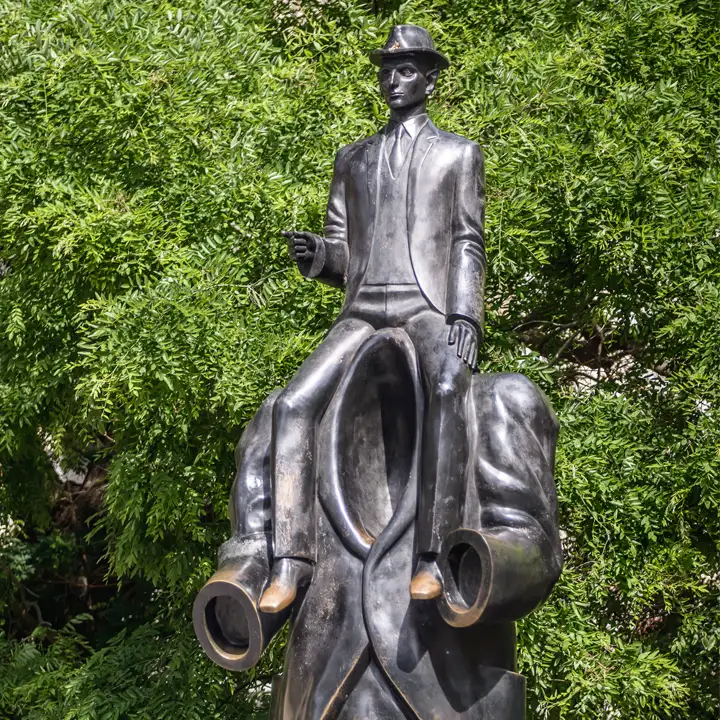
Day 8
Prague
Day 8
Prague



Morning
Jewish Quarter
Jews have lived in Prague since its beginnings in the 10th century and have endowed it with a rich heritage. The ghetto was created in the 12th century, as Jews were forced to live separately from Christians. Despite persecution, the community prospered, but sadly, only a small minority survived the Nazi occupation. A lasting legacy remains, including synagogues, architecture, and a fascinating cemetery.

Spanish Synagogue
Discover the synagogue considered by many to be Prague's most beautiful.
Show More

Old-New Synagogue
See the oldest surviving synagogue in Europe and also one of Prague's earliest Gothic buildings.
Show More
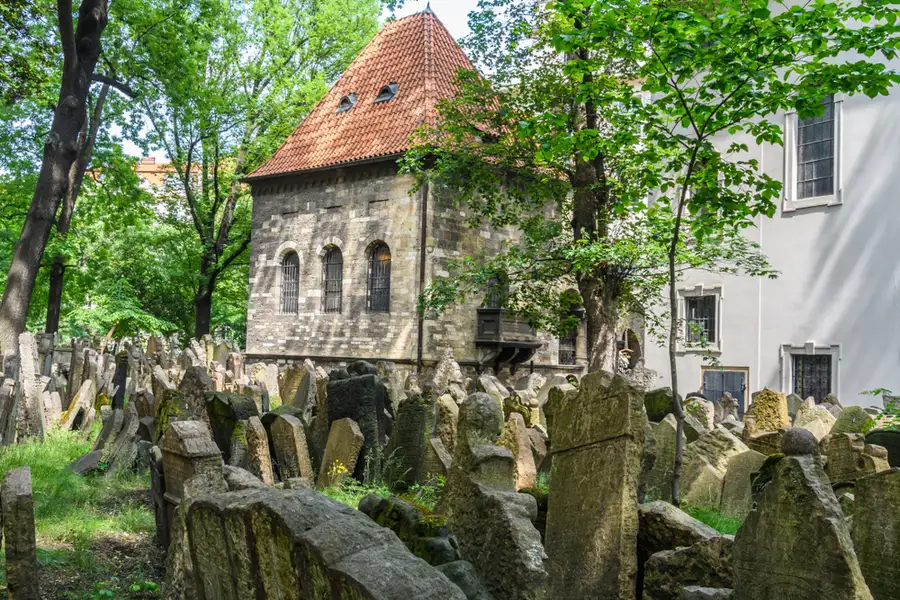
Old Jewish Cemetery
Take an unforgettable visit to one of Europe's largest medieval Jewish cemeteries.
Show More

Spanish Synagogue
Discover the synagogue considered by many to be Prague's most beautiful.
Show More

Old-New Synagogue
See the oldest surviving synagogue in Europe and also one of Prague's earliest Gothic buildings.
Show More

Old Jewish Cemetery
Take an unforgettable visit to one of Europe's largest medieval Jewish cemeteries.
Show More

Spanish Synagogue
Discover the synagogue considered by many to be Prague's most beautiful.
Show More
prev
next

Day 8
Prague

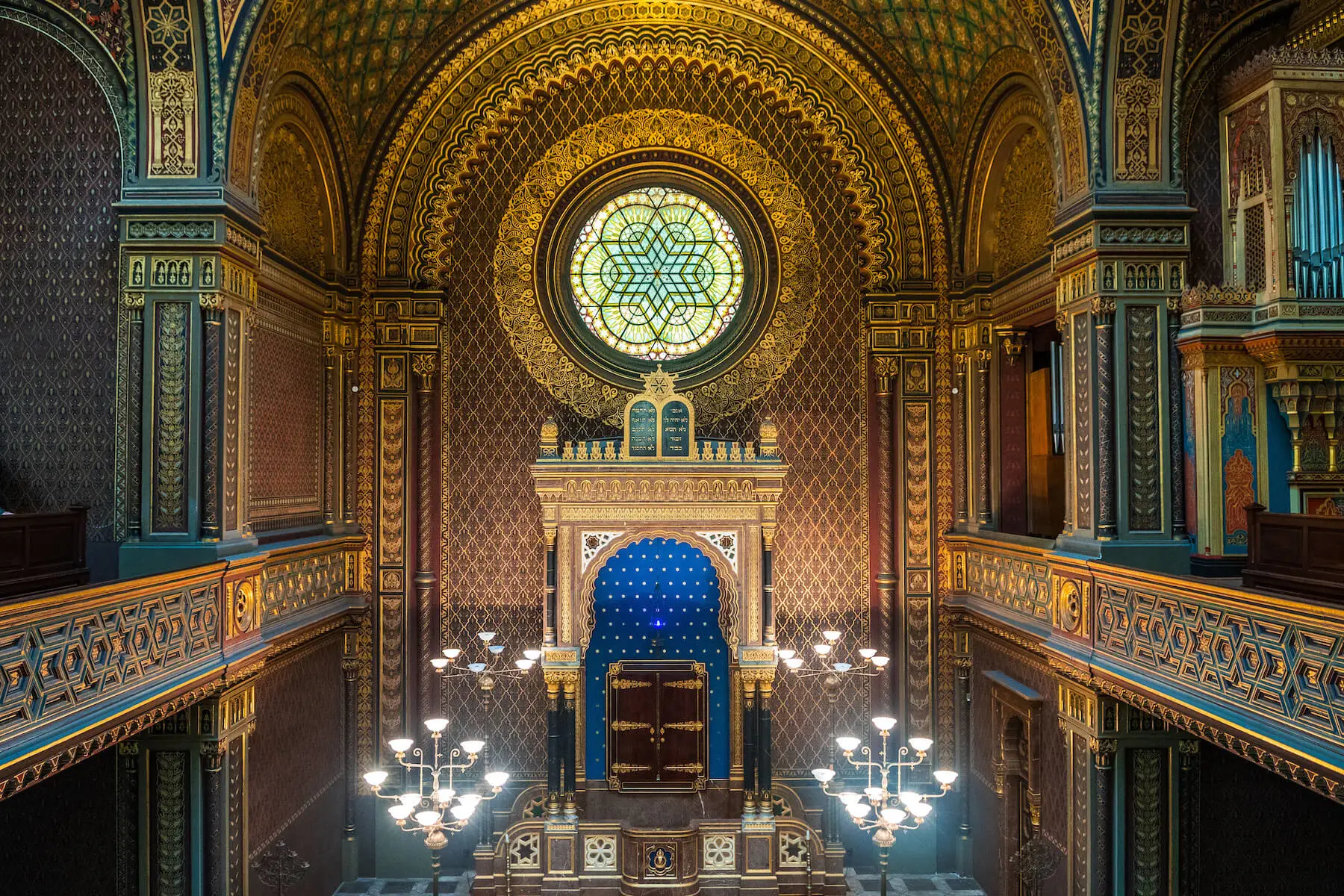
Spanish Synagogue
 Highlight of Jewish Quarter
Highlight of Jewish QuarterDiscover the synagogue considered by many to be Prague's most beautiful.
Completed in 1868, the Spanish Synagogue is the newest synagogue in Prague's Jewish Quarter, but happens to be built on the site of the former Oldest Synagogue in Prague. It is built in a stunning Spanish Moorish style as a symbol of the flowering of the Jewish culture which occurred under Muslim rule on the Iberian Peninsula.
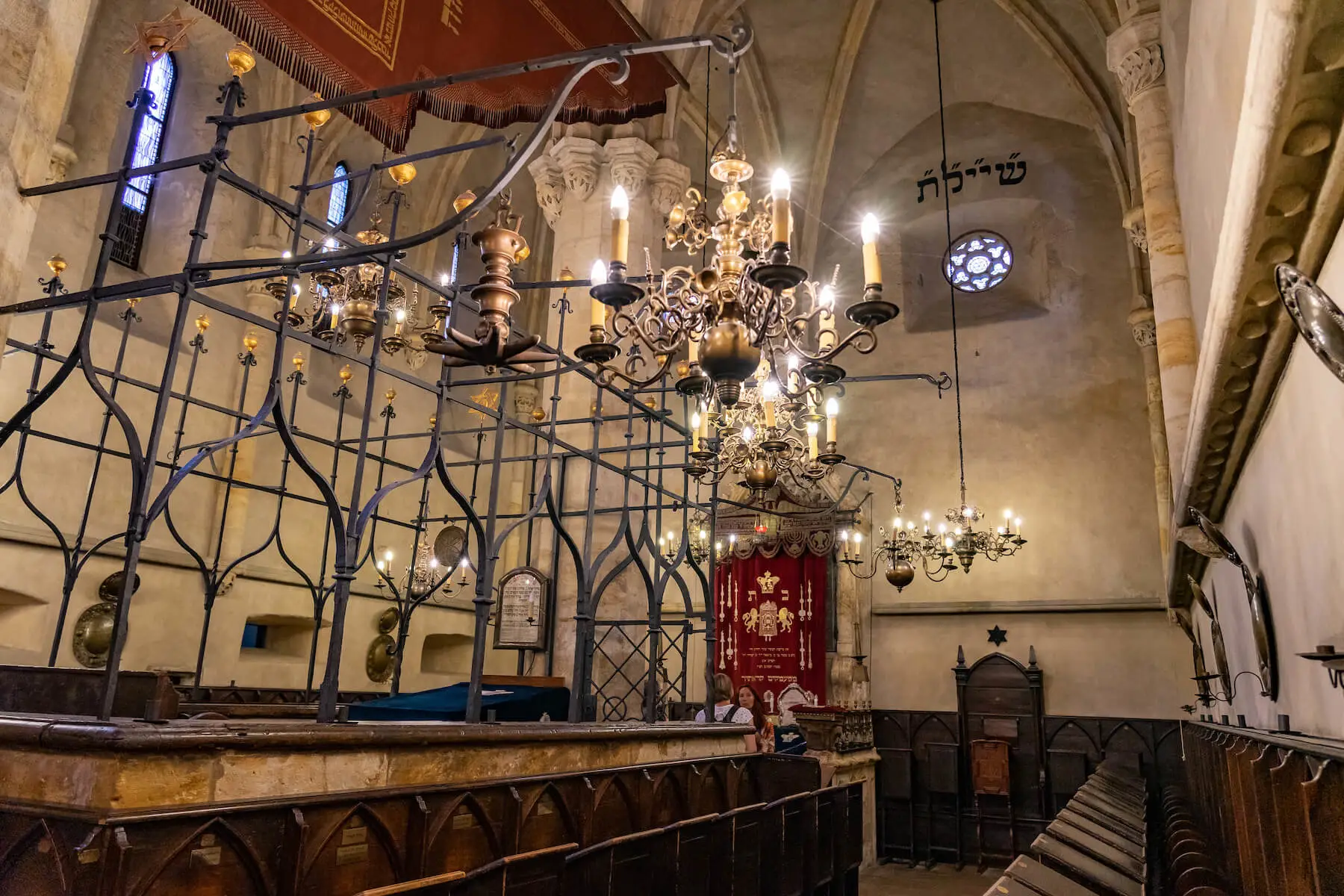
Old-New Synagogue
 Highlight of Jewish Quarter
Highlight of Jewish QuarterSee the oldest surviving synagogue in Europe and also one of Prague's earliest Gothic buildings.
When built it was Prague’s newest synagogue, but over time became its oldest – hence the “Old-New”. A beautiful ark holds the Torah and legend says its attic is the hiding place of the legendary clay Golem.

Old Jewish Cemetery
 Highlight of Jewish Quarter
Highlight of Jewish QuarterTake an unforgettable visit to one of Europe's largest medieval Jewish cemeteries.
As the Jewish Ghetto was quite cramped, there was no room to expand the cemetery. Unable to acquire further land, and not wishing to dishonor ancestors through the demolition of existing graves, Prague's Jews buried their loved ones in multiple levels. Gravestones are packed in tightly and in some areas the burials reach 12 layers!

Spanish Synagogue
 Highlight of Jewish Quarter
Highlight of Jewish QuarterDiscover the synagogue considered by many to be Prague's most beautiful.
Completed in 1868, the Spanish Synagogue is the newest synagogue in Prague's Jewish Quarter, but happens to be built on the site of the former Oldest Synagogue in Prague. It is built in a stunning Spanish Moorish style as a symbol of the flowering of the Jewish culture which occurred under Muslim rule on the Iberian Peninsula.

Old-New Synagogue
 Highlight of Jewish Quarter
Highlight of Jewish QuarterSee the oldest surviving synagogue in Europe and also one of Prague's earliest Gothic buildings.
When built it was Prague’s newest synagogue, but over time became its oldest – hence the “Old-New”. A beautiful ark holds the Torah and legend says its attic is the hiding place of the legendary clay Golem.

Old Jewish Cemetery
 Highlight of Jewish Quarter
Highlight of Jewish QuarterTake an unforgettable visit to one of Europe's largest medieval Jewish cemeteries.
As the Jewish Ghetto was quite cramped, there was no room to expand the cemetery. Unable to acquire further land, and not wishing to dishonor ancestors through the demolition of existing graves, Prague's Jews buried their loved ones in multiple levels. Gravestones are packed in tightly and in some areas the burials reach 12 layers!

Spanish Synagogue
 Highlight of Jewish Quarter
Highlight of Jewish QuarterDiscover the synagogue considered by many to be Prague's most beautiful.
Completed in 1868, the Spanish Synagogue is the newest synagogue in Prague's Jewish Quarter, but happens to be built on the site of the former Oldest Synagogue in Prague. It is built in a stunning Spanish Moorish style as a symbol of the flowering of the Jewish culture which occurred under Muslim rule on the Iberian Peninsula.
prev
next


Day 9
Prague
Day 9
Prague


9:00 AM - 4:00 PM
Guided Bike to Karlštejn
In this tour, you will bicycle alongside a beautiful river and through forested hills to reach one of Europe's most famous and awe-inspiring castles. After picking up your bikes in Prague, you will cycle to a rail station where you will catch a train and take a 40-minute ride through the Czech countryside to the town of Beroun. You will then begin a beautiful journey along the Berounka River, stopping in a pub in a riverside village for lunch. After lunch, you will make your way up into the hills above the castle Karlštejn and then descend to the fairy-tale perfect, Medieval castle below.

Day 9
Prague



Day 10
Depart Prague
Day 10
Depart Prague

To Be Determined
Taxi Transfer to Airport

Day 10
Depart Prague


What's Included In Bohemian & Saxon Highlights Trip

Pre-Paid Tours and Activities:
- Guided Cycling Tour of Berlin
- Guided Walking Tour of Old Town
- Prague Castle & Royal Route Guided Walk
- Guided Bike Ride through the Czech Countryside to Karlštejn Castle
- City Card for Berlin, including discounts to many popular attractions

Pre-Paid Transportation:
- 2nd Class Train Tickets from Berlin to Dresden
- 2nd Class Train Tickets from Dresden Hbf to Praha hl.n.
- Public Transport Tickets for Berlin

Accommodation:
- 3 nights at a hotel of your choice in Berlin
- 2 nights at a hotel of your choice in Dresden
- 4 nights at a hotel of your choice in Prague

Go Real Travel Mobile App:
- Itinerary Plan & Reservations Info
- Points of Interest
- Detailed Travel Information
- Maps & Directions
Other Trips You May Like

9 Days
From$2240USD
Capitals, Canals, and Castles: A 9-Day Tour of Amsterdam, Berlin, and Prague

Netherlands, Germany, Czech Republic

10 Days
From$1927USD
Rivers and Revelries in the Cultural Capitals of Central Europe - Berlin, Prague & Budapest

Germany, Czech Republic, Hungary

10 Days
From$1415USD

12 Days
From$2449USD
12 Days in the Heart of Central Europe: Berlin, Prague, Vienna, and Munich

Germany, Czech Republic, Austria

15 Days
From$3249USD
Timeless Central Europe:: From Berlin to Vienna through the Czech Republic

Germany, Czech Republic, Austria

7 Days
From$1495USD
One Week in Berlin & Prague: See the Highlights and Experience the Local Scene

Germany, Czech Republic

7 Days
From$1195USD

10 Days
From$1925USD
Discover Eastern Europe: 10-Day Journey through Prague, Dresden, and Berlin

Czech Republic, Germany

11 Days
From$2045USD
11 Day Itinerary in Berlin, Prague & Vienna: Castles, Palaces, and Much More

Germany, Czech Republic, Austria

9 Days
From$2240USD
Capitals, Canals, and Castles: A 9-Day Tour of Amsterdam, Berlin, and Prague

Netherlands, Germany, Czech Republic

10 Days
From$1927USD
Rivers and Revelries in the Cultural Capitals of Central Europe - Berlin, Prague & Budapest

Germany, Czech Republic, Hungary

10 Days
From$1415USD

12 Days
From$2449USD
12 Days in the Heart of Central Europe: Berlin, Prague, Vienna, and Munich

Germany, Czech Republic, Austria

15 Days
From$3249USD
Timeless Central Europe:: From Berlin to Vienna through the Czech Republic

Germany, Czech Republic, Austria

7 Days
From$1495USD
One Week in Berlin & Prague: See the Highlights and Experience the Local Scene

Germany, Czech Republic

7 Days
From$1195USD

10 Days
From$1925USD
Discover Eastern Europe: 10-Day Journey through Prague, Dresden, and Berlin

Czech Republic, Germany

11 Days
From$2045USD
11 Day Itinerary in Berlin, Prague & Vienna: Castles, Palaces, and Much More

Germany, Czech Republic, Austria
prev
next
Featured Blogs
prev
next
Our Customers Say It Best
Marianne Strydom, Paarl, South Africa
I just wanted to thank you for organizing an amazing trip for me – I packed in so much in such a short period of time and everything was just perfect. The way you do things makes it possible to really get to know the destination, which for me as a travel agent could not have been better. 

Otto Chuy, Los Angeles, California
I am still surprised how everything worked as planned, without a hitch. All instructions in your itinerary were precise and correct. Your suggestions and comments in each of the locations we went to were very helpful. All your guides, without exception, were wonderful and exactly on time. 

Malini Dutta, Boston, Massachusetts
We can't thank you enough for the detailed plans, maps, and suggestions. It really felt that someone was holding our hands and showing us around. We had all the excitement of discovering foreign lands, with none of the problems that can happen while negotiating unfamiliar places. In fact, all the cities felt like home within a few hours of arriving and exploring. 

Bev and Mark Frankel, Williamsburg, Virginia
We could not be more pleased with Go Real Travel! You took the guess work out of things like public transport but still managed to allow us the freedom to tour as we wanted. Our guides were exceptional and every time I saw a Viking Cruise tour of 25 people, I realized the quality experience we were getting with Go Real. 

Marianne Strydom, Paarl, South Africa
I just wanted to thank you for organizing an amazing trip for me – I packed in so much in such a short period of time and everything was just perfect. The way you do things makes it possible to really get to know the destination, which for me as a travel agent could not have been better. 

Otto Chuy, Los Angeles, California
I am still surprised how everything worked as planned, without a hitch. All instructions in your itinerary were precise and correct. Your suggestions and comments in each of the locations we went to were very helpful. All your guides, without exception, were wonderful and exactly on time. 

Malini Dutta, Boston, Massachusetts
We can't thank you enough for the detailed plans, maps, and suggestions. It really felt that someone was holding our hands and showing us around. We had all the excitement of discovering foreign lands, with none of the problems that can happen while negotiating unfamiliar places. In fact, all the cities felt like home within a few hours of arriving and exploring. 

Bev and Mark Frankel, Williamsburg, Virginia
We could not be more pleased with Go Real Travel! You took the guess work out of things like public transport but still managed to allow us the freedom to tour as we wanted. Our guides were exceptional and every time I saw a Viking Cruise tour of 25 people, I realized the quality experience we were getting with Go Real. 



Explore cities in more detail
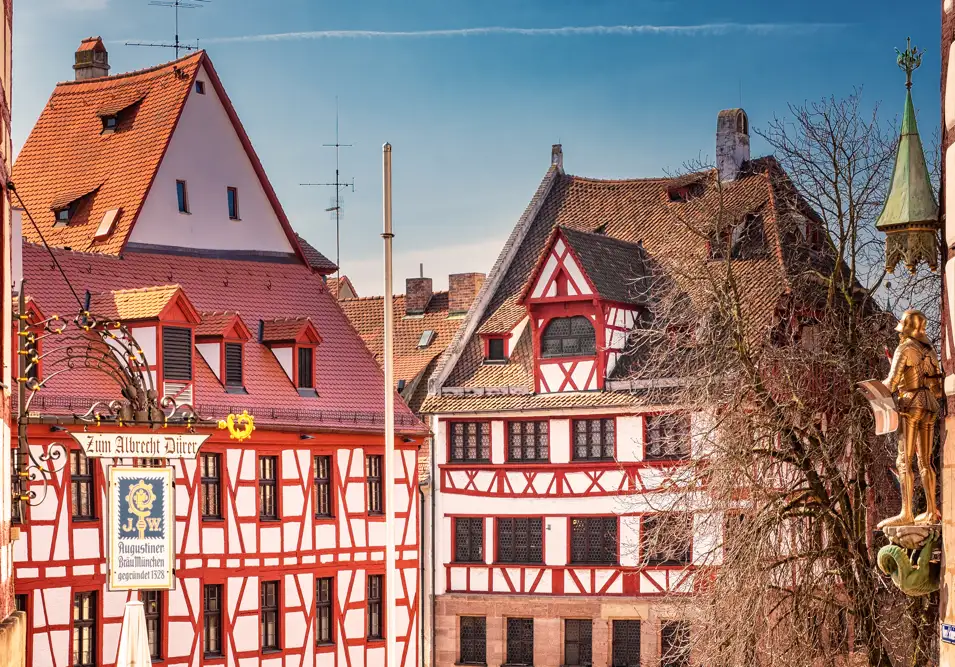
Nuremberg
One of the most authentic, storied German destinations, Nuremberg's picturesque old town, glorious castle, and buzzing Christmas Market makes this city a time-true classic. The ideal gateway to old Bavaria, Nuremberg offers a primer in German history before you embark on the lovely journey through old Bavaria, known as the Romantic Road. Considered the capital of the Holy Roman Empire in the middle ages, Nuremberg would have felt like the center of the world as a procession of kings and emperors passed through its magnificent gates. When the German Renaissance came, Nuremberg was at its heart. Albrecht Dürer, the great German master artist, was born here, and Martin Luther called Nuremberg Germany's 'eyes and ears'. Skip forward a few centuries, and the city took a dark turn, as Nuremberg became a gathering point for the German National Socialists. Slightly outside of town, you can still find the Nazi Party Rallying Grounds, a sobering reminder of the not so distant past. If it all gets too heavy, you can end the day with a glass of rotbier (red beer) and mull it over. Nuremberg is a must-see for anyone who wants to delve into Germany's past.

Learn About Nuremberg
Build Nuremberg Trip
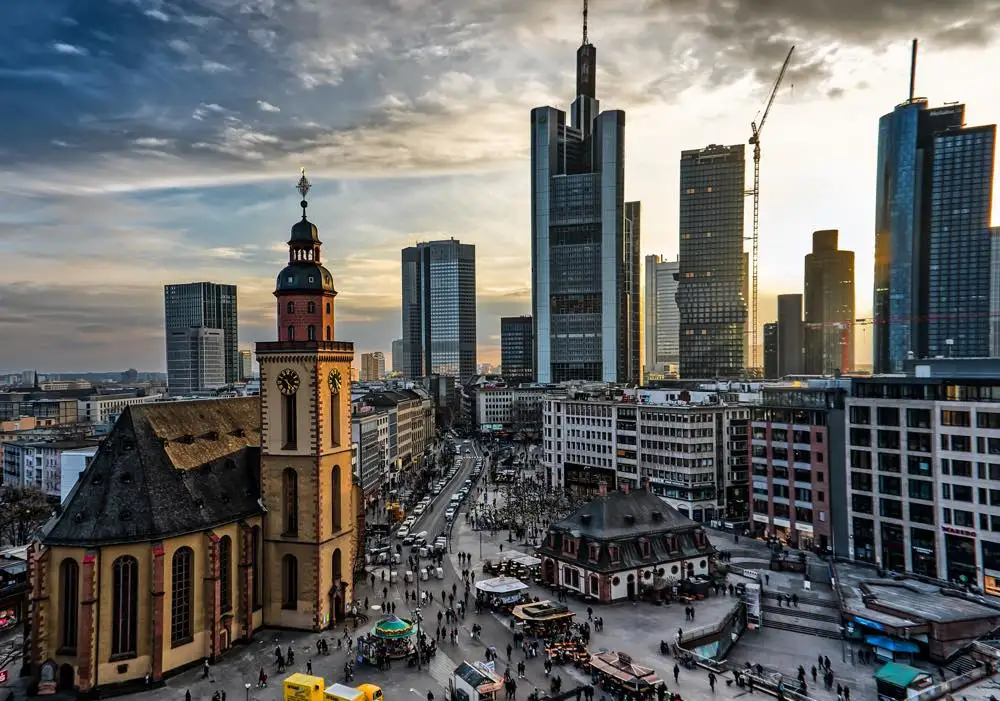
Frankfurt
Dubbed ‘Mainhatten’ for its glass highrises, financial prowess, and proximity to the Main River, Frankfurt offers a fascinating glimpse into the ‘engine room’ of Europe’s economy with an unexpected twist. Among the glass and steel buildings, the old-worldly Römerberg square will give you a double-take. The square’s 15th-century half-timbered houses, old statues, and church spires contrast dramatically against the modern 21st-century skyscrapers beyond. If you visit at Christmas, the Römerberg is truly special, aglow with the light of the tallest Christmas tree in Germany. The square fills with stalls selling handicrafts, and the air is scented with hot apple wine, honey, and cinnamon. Delve deeper into Frankfurt and you’ll find a substantial museum district, the Museumsufer (Museum Embankment). This area features a cluster of twelve museums on either side of Main River. This includes the Städel, home to Tischbein’s famous painting of renowned writer Johann Wolfgang von Goethe, one of Frankfurt’s most prestigious sons. The more time you spend in Frankfurt, the more you’ll discover a highly cultured city lurking beneath its glass facades. If you have the time, Frankfurt is certainly worth a second look.

Learn About Frankfurt
Build Frankfurt Trip
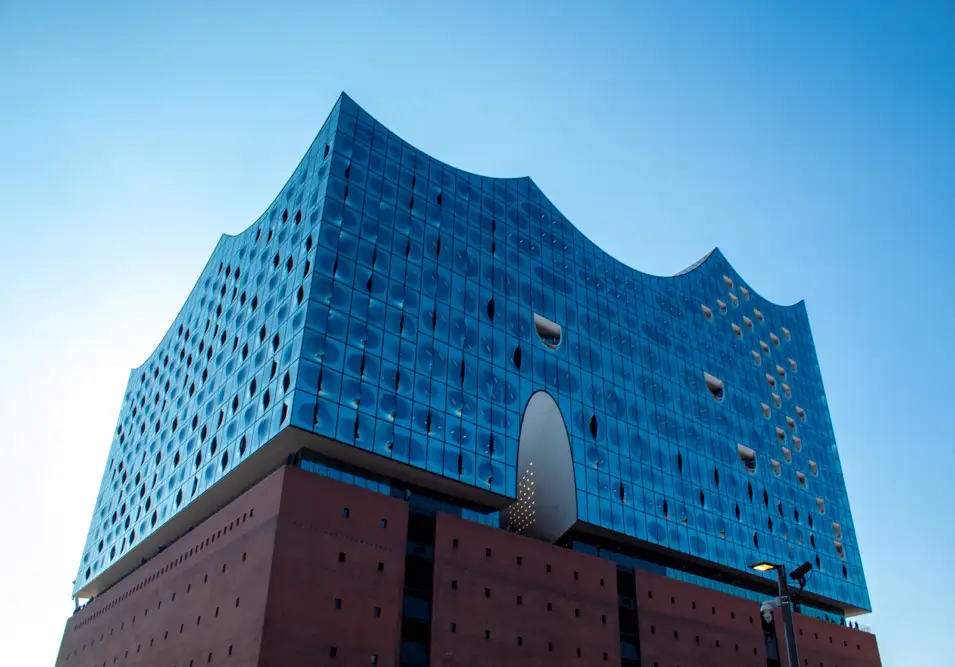
Hamburg
Compared to other German cities, Hamburg has a moody, nautical charisma all of its own. Despite being battered throughout history by floods, fires, and bombs, Hamburg has always held its head up high. Resilience is in the air in Hamburg, along with the briny smell of the North Sea. In recent years Hamburg has garnered a reputation for commerce and nightlife. Frequent travelers whisper that Hamburg is Germany’s ‘undiscovered’ city, the place to go for a little business and a lot of fun. Known as Germany’s ‘gateway to the world’, ships dock in Hamburg as they haul cargo up and down the Elbe River. The city thrives as Germany’s primary seaport and has been a center of trade since the middle ages. Its affluence shows in the 19th-century brick warehouses, flourishing restaurant scene, and recently constructed Elbphilharmonie concert hall, which floats majestically in the harbor, part ship and part island. Hamburg is a city for those who like to live large - in a cultured, German kind of way. Attend a performance at the orchestra, cruise on a boat around the Außenalster Lake, or have a night on the Reeperbahn, the Vegas-like strip where the Beatles once performed. Whatever you do in the city, Hamburg will make you look twice and see Germany from a totally different point of view.

Learn About Hamburg
Build Hamburg Trip
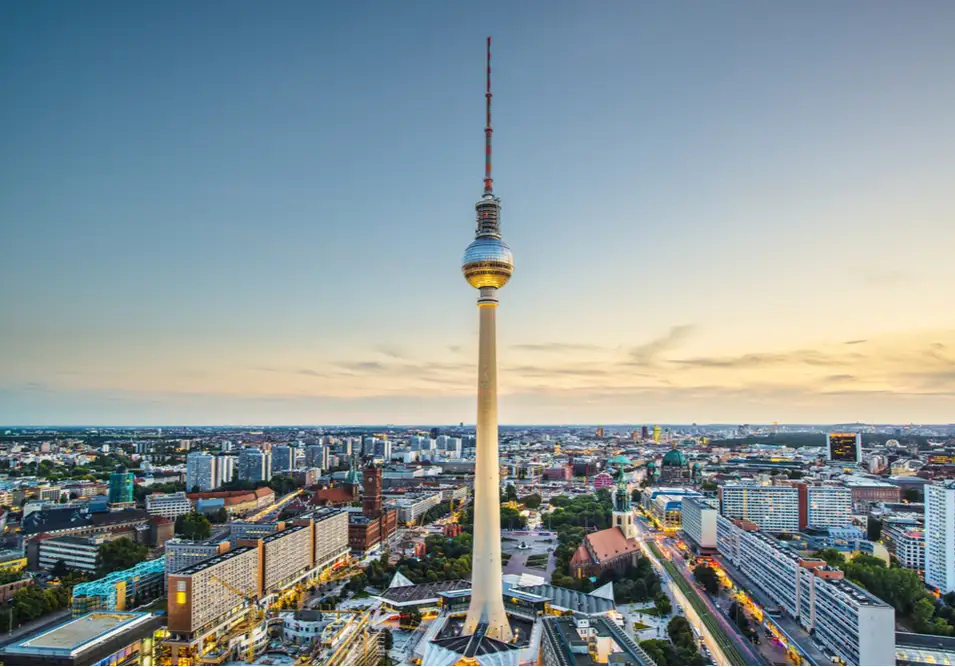
Berlin
Since the fall of its notorious wall, Berlin’s unification has seen it go from strength to strength. No wonder the city feels like it hasn’t stopped partying since the 1990s. There is so much to celebrate here. Fueled by the robust economy, a thriving tech scene, and straight-up German bonhomie, when you step into Berlin you’ll soon be caught up in its spirit. For all this gusto, Berlin hasn’t forgotten its troubled past. A visit to Berlin is to bear witness to history. Portions of the wall remain intact, and the city’s Jewish Museum offers a detailed, emotional examination of the Holocaust. Inside the reconstructed Reichstag, every attempt has been made to preserve the parliament’s beleaguered history. The buildings' glass dome addition feels less like a triumphal crown and more like a freshly healed battle scar. Days in Berlin are easily spent wandering from a cafe to the cultural institutions on Museum Island, or over to the Charlottenburg Palace. By night, crowds wander through the booming bars and nightclubs or gaze upon the floodlit Brandenburg Gate and Victory Column monuments. An international city that can offer something to everyone, Berlin is an unmissable stop on your German journey.

Learn About Berlin
Build Berlin Trip
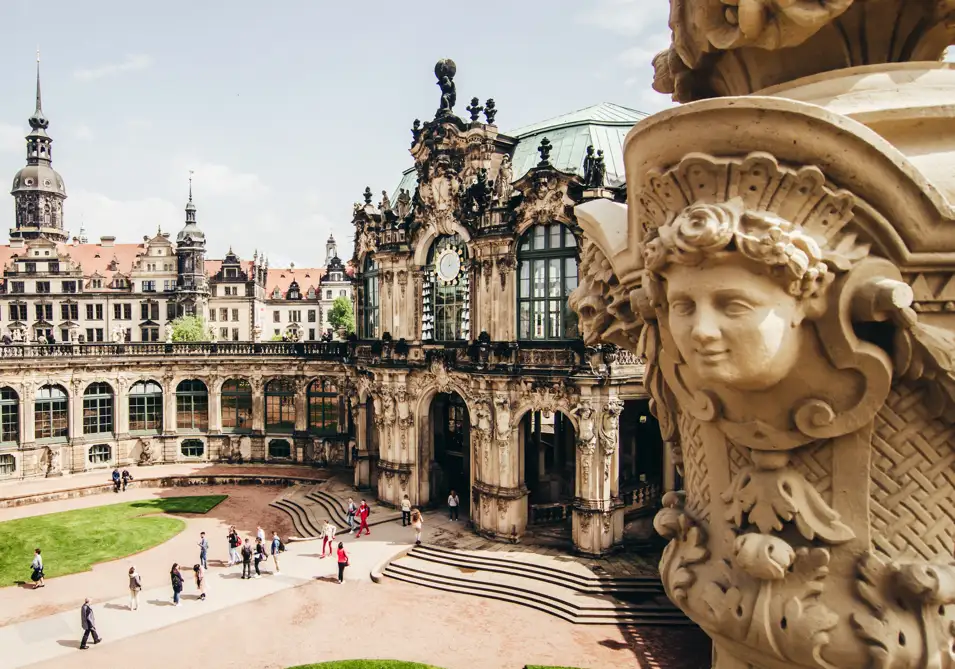
Dresden
Nearly every wall and rooftop in Dresden seems to be finished with a flourish. Defined by its ornamental baroque architecture, a power statement of Saxon royalty, Dresden is made all the more miraculous considering the city was leveled by firebombing in WWII. After the war, the city was reconstructed, brick by painstaking brick. Even under East German-Soviet rule, which usually eschewed frivolous design, buildings like the Semper Opera House were pieced back to their former glory. Restoration of the majestic Zwinger Palace and bell domed Church of Our Lady slowly followed, with the Frauenkirche only fully repaired in 2005. Arguably there is no other city in Europe that cherishes its hard-won architecture as much as Dresden. Although it is a compact city, so many of its buildings will stop you in your tracks that architecture fans will easily lose a whole day in the Old Town area. Especially during the winter months, Dresden sparkles with a joyous, uplifting ambiance. The city is recognized as having the best-ever Christmas market in all of Europe. Between the twinkling lights, the scent of hot wine and gingerbread, and the towering Christmas tree, it’s worth going out of your way to see Dresden at this time of year.

Learn About Dresden
Build Dresden Trip
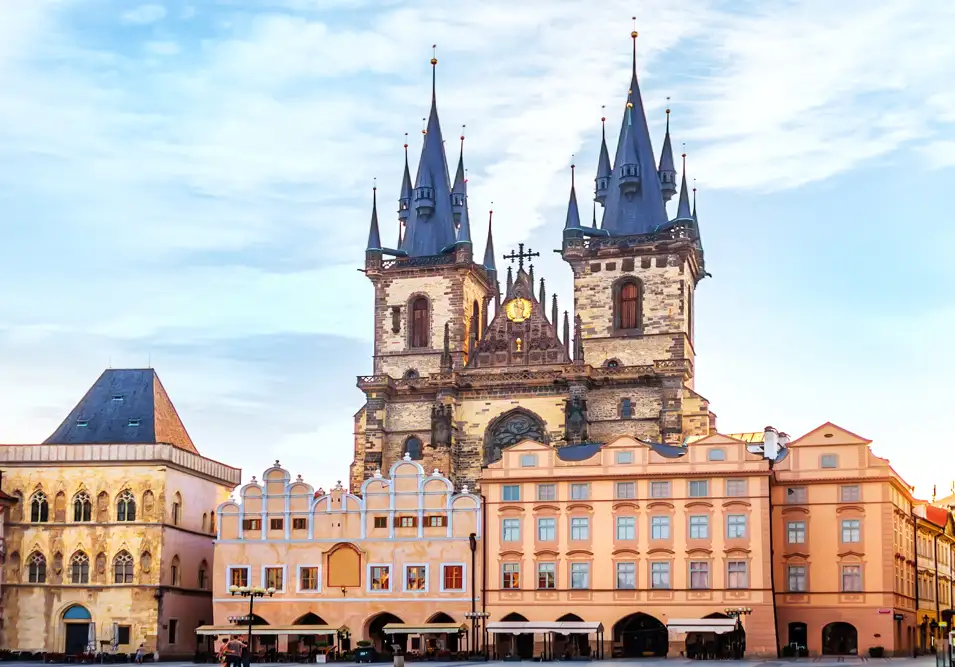
Prague
The city of Prague is indisputably the gem of Central Europe. Full of history, culture, and classic Czech pubs around every corner, Prague is teeming with nooks and crannies just waiting to be discovered. The narrow cobblestone streets and warm red rooftops give the city a homey feel, while the well-preserved medieval architecture transports you back in time. Walking across the Charles Bridge with the view of the Prague Castle will make you feel like you’re living in a fairytale, and you might as well be. As an up-and-coming destination, Prague is a perfect mix of classic and modern. New trendy cafes and bistros are always popping up, and you can always find a group of lively locals chowing down on goulash and quaffing pivo (the best beer in Europe!) at traditional Czech restaurants across the city. The clash of modernity and tradition, preservation and innovation, gives this city a mysterious air that you won’t soon forget.

Learn About Prague
Build Prague Trip

Nuremberg
One of the most authentic, storied German destinations, Nuremberg's picturesque old town, glorious castle, and buzzing Christmas Market makes this city a time-true classic. The ideal gateway to old Bavaria, Nuremberg offers a primer in German history before you embark on the lovely journey through old Bavaria, known as the Romantic Road. Considered the capital of the Holy Roman Empire in the middle ages, Nuremberg would have felt like the center of the world as a procession of kings and emperors passed through its magnificent gates. When the German Renaissance came, Nuremberg was at its heart. Albrecht Dürer, the great German master artist, was born here, and Martin Luther called Nuremberg Germany's 'eyes and ears'. Skip forward a few centuries, and the city took a dark turn, as Nuremberg became a gathering point for the German National Socialists. Slightly outside of town, you can still find the Nazi Party Rallying Grounds, a sobering reminder of the not so distant past. If it all gets too heavy, you can end the day with a glass of rotbier (red beer) and mull it over. Nuremberg is a must-see for anyone who wants to delve into Germany's past.

Learn About Nuremberg
Build Nuremberg Trip

Frankfurt
Dubbed ‘Mainhatten’ for its glass highrises, financial prowess, and proximity to the Main River, Frankfurt offers a fascinating glimpse into the ‘engine room’ of Europe’s economy with an unexpected twist. Among the glass and steel buildings, the old-worldly Römerberg square will give you a double-take. The square’s 15th-century half-timbered houses, old statues, and church spires contrast dramatically against the modern 21st-century skyscrapers beyond. If you visit at Christmas, the Römerberg is truly special, aglow with the light of the tallest Christmas tree in Germany. The square fills with stalls selling handicrafts, and the air is scented with hot apple wine, honey, and cinnamon. Delve deeper into Frankfurt and you’ll find a substantial museum district, the Museumsufer (Museum Embankment). This area features a cluster of twelve museums on either side of Main River. This includes the Städel, home to Tischbein’s famous painting of renowned writer Johann Wolfgang von Goethe, one of Frankfurt’s most prestigious sons. The more time you spend in Frankfurt, the more you’ll discover a highly cultured city lurking beneath its glass facades. If you have the time, Frankfurt is certainly worth a second look.

Learn About Frankfurt
Build Frankfurt Trip

Hamburg
Compared to other German cities, Hamburg has a moody, nautical charisma all of its own. Despite being battered throughout history by floods, fires, and bombs, Hamburg has always held its head up high. Resilience is in the air in Hamburg, along with the briny smell of the North Sea. In recent years Hamburg has garnered a reputation for commerce and nightlife. Frequent travelers whisper that Hamburg is Germany’s ‘undiscovered’ city, the place to go for a little business and a lot of fun. Known as Germany’s ‘gateway to the world’, ships dock in Hamburg as they haul cargo up and down the Elbe River. The city thrives as Germany’s primary seaport and has been a center of trade since the middle ages. Its affluence shows in the 19th-century brick warehouses, flourishing restaurant scene, and recently constructed Elbphilharmonie concert hall, which floats majestically in the harbor, part ship and part island. Hamburg is a city for those who like to live large - in a cultured, German kind of way. Attend a performance at the orchestra, cruise on a boat around the Außenalster Lake, or have a night on the Reeperbahn, the Vegas-like strip where the Beatles once performed. Whatever you do in the city, Hamburg will make you look twice and see Germany from a totally different point of view.

Learn About Hamburg
Build Hamburg Trip

Berlin
Since the fall of its notorious wall, Berlin’s unification has seen it go from strength to strength. No wonder the city feels like it hasn’t stopped partying since the 1990s. There is so much to celebrate here. Fueled by the robust economy, a thriving tech scene, and straight-up German bonhomie, when you step into Berlin you’ll soon be caught up in its spirit. For all this gusto, Berlin hasn’t forgotten its troubled past. A visit to Berlin is to bear witness to history. Portions of the wall remain intact, and the city’s Jewish Museum offers a detailed, emotional examination of the Holocaust. Inside the reconstructed Reichstag, every attempt has been made to preserve the parliament’s beleaguered history. The buildings' glass dome addition feels less like a triumphal crown and more like a freshly healed battle scar. Days in Berlin are easily spent wandering from a cafe to the cultural institutions on Museum Island, or over to the Charlottenburg Palace. By night, crowds wander through the booming bars and nightclubs or gaze upon the floodlit Brandenburg Gate and Victory Column monuments. An international city that can offer something to everyone, Berlin is an unmissable stop on your German journey.

Learn About Berlin
Build Berlin Trip

Dresden
Nearly every wall and rooftop in Dresden seems to be finished with a flourish. Defined by its ornamental baroque architecture, a power statement of Saxon royalty, Dresden is made all the more miraculous considering the city was leveled by firebombing in WWII. After the war, the city was reconstructed, brick by painstaking brick. Even under East German-Soviet rule, which usually eschewed frivolous design, buildings like the Semper Opera House were pieced back to their former glory. Restoration of the majestic Zwinger Palace and bell domed Church of Our Lady slowly followed, with the Frauenkirche only fully repaired in 2005. Arguably there is no other city in Europe that cherishes its hard-won architecture as much as Dresden. Although it is a compact city, so many of its buildings will stop you in your tracks that architecture fans will easily lose a whole day in the Old Town area. Especially during the winter months, Dresden sparkles with a joyous, uplifting ambiance. The city is recognized as having the best-ever Christmas market in all of Europe. Between the twinkling lights, the scent of hot wine and gingerbread, and the towering Christmas tree, it’s worth going out of your way to see Dresden at this time of year.

Learn About Dresden
Build Dresden Trip

Prague
The city of Prague is indisputably the gem of Central Europe. Full of history, culture, and classic Czech pubs around every corner, Prague is teeming with nooks and crannies just waiting to be discovered. The narrow cobblestone streets and warm red rooftops give the city a homey feel, while the well-preserved medieval architecture transports you back in time. Walking across the Charles Bridge with the view of the Prague Castle will make you feel like you’re living in a fairytale, and you might as well be. As an up-and-coming destination, Prague is a perfect mix of classic and modern. New trendy cafes and bistros are always popping up, and you can always find a group of lively locals chowing down on goulash and quaffing pivo (the best beer in Europe!) at traditional Czech restaurants across the city. The clash of modernity and tradition, preservation and innovation, gives this city a mysterious air that you won’t soon forget.

Learn About Prague
Build Prague Trip
prev
next


 Map of Your Itinerary Route
Map of Your Itinerary Route
Zoom In to the cities to see your itinerary in more detail


 4.8
4.8 